iPhone X review
The iPhone X is the huge leap forward that Apple's handsets needed after ten years, and it's even better in 2021 thanks to its iOS 14 upgrade and continually-added new features. Aside from the original iPhone in 2007, the iPhone X had the biggest impact on Apple’s smartphone direction ever – and even its newest successors haven't changed much of its design innovations.
Apple itself is calling it the future of the smartphone, the embodiment of what it’s been trying to achieve for a decade. But while the iPhone X is all about premium parts and an all-new experience, it was a huge gamble for the Cupertino brand too – which paid off, as every new iPhone since then has largely kept the design, up to the latest iPhone 12 Pro.
Losing known, reliable elements like the Touch ID fingerprint scanner, the home button; introducing new methods of navigating and unlocking the phone – and charging a lot more for the privilege – seems risky for a company that was already treading new ground by doing away with the traditional headphone jack.
But the iPhone X is the handset we’d been demanding from Apple for years – a world away from the increasingly-tired designs leading up to the iPhone 8 that have continued to live in the nearly identical-looking iPhone SE 2020.
Watch our review of the iPhone X's design below.
The fervor around this phone tells that story – everyone wants to know if the iPhone X is worth having, partly because it actually represents a new iPhone, and that fervor is such that they don’t seem to care about the cost. Thankfully, that cost has come down over the years, and it's still a powerful phone.
So… is the iPhone X worth having? Did it change the direction of an industry where many of the specs Apple has put in – fast charging, wireless charging, bezel-less displays and face recognition – are already on the market?
We've had the iPhone X in our grasp for years now, and it's easily one of the best smartphones around – even in the face of the newest yet similar-looking iPhone 12 line including this phone's successor, the iPhone 12 Pro – but there are still a few things that might throw even long-time Apple fans.

Weight: 174g
Dimensions: 143.6 x 70.9 x 7.7 mm
OS: iOS 14
Screen size: 5.8-inch
Screen Resolution: 1125x2436
CPU: A11 Bionic
RAM: 3GB*
Storage: 64GB / 256GB
Battery: 2,716mAh*
Rear camera: 12MP+12MP (both OIS)
Front camera: 7MP
If you're loving your iPhones X, or considering buying one, the package is about to get a lot more tempting now that iOS 14 is out. Apple's latest operating system brings many new features like widgets, Dark Mode and a range of app speed increases, so you can make the most of your iPhone experience.
iPhone X price and release date
- Released on November 3 2017 worldwide
- Cheaper than launch in 2020
- Comes in 64GB and 256GB storage sizes
It’s almost pointless to discuss the iPhone X price – it launched as the most expensive flagship phone on the market and it's still pricey now, but iPhone users are more willing than most to look past cost.
But, while the focus here is going to be on the technology, we still need to at least mention the price and release date. It's out now, having launched worldwide on November 3 2017. The price is harder to swallow.
At launch, the iPhone X cost $999 / £999 / AU$1,579 for the basic, 64GB model. If you wanted the larger 256GB model it cost $1,149 / £1,149 / AU$1,829.
Since then of course the iPhone XS has launched and as a result Apple has stopped selling the iPhone X. You can still buy it elsewhere though, and are looking at much more significant price drops in the years since it launched.
Although it's expensive for sure, you can use our iPhone X deals page (UK only) to ensure you get the best value contract available.
Screen
- By far the best screen on an iPhone prior to XS
- Clear, vibrant colors
- Notch at top slightly irks, but doesn’t get in the way
The first thing you’ll notice about the new iPhone is hard to miss: the new screen blazes into your eyes the second you pick up the handset.
The 5.8-inch OLED display is, quite simply, the best thing Apple has ever crammed into an iPhone, or it was, until the iPhone XS arrived. It’s leaps ahead of the iPhone 8 and 8 Plus for so many reasons: the sharpness, the quality, the fact that it fills the whole front of the phone, and the color reproduction.
It’s also using a new, longer, screen, but while it looks larger than the iPhone 8 Plus’ 5.5-inch display on paper, it’s only marginally bigger in terms of actual screen real estate – it’s just stretched upwards, so it's taller, not wider.
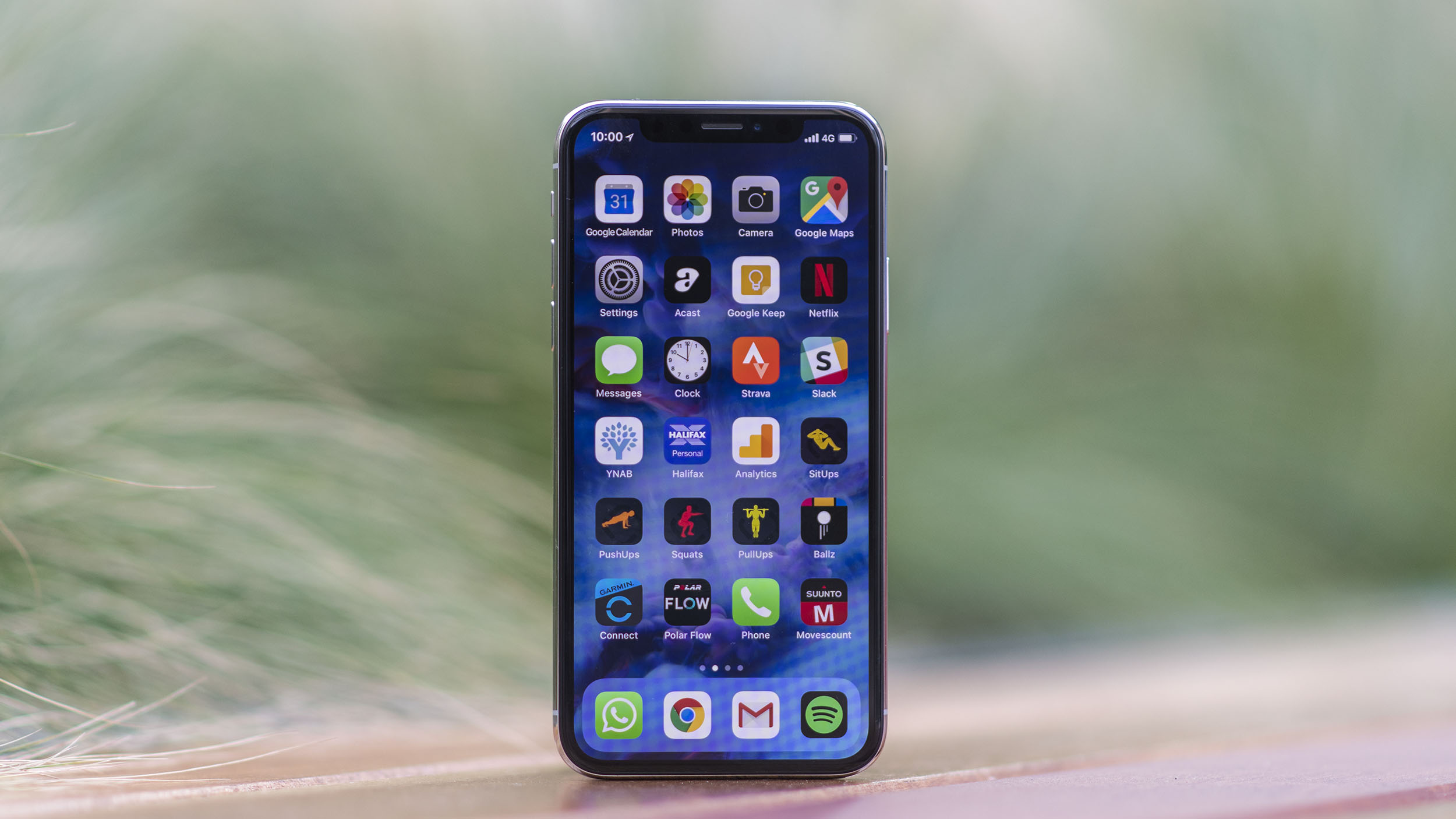
OLED technology means you’re getting deeper blacks and more blinding whites, so everything from websites to the photos you take in will look a little better.
Some will point to the fact that Samsung has been using OLED screens on its phones since the first Galaxy, but Apple counters that by saying it’s only now that the technology is good enough for its phones.
On the face of it that sounds defensive, but when you use the iPhone X you can see it’s a screen that’s incredibly, well, Apple.
It’s not the sharpest or most colorful screen on a smartphone, but it’s clean, crisp and doesn’t suffer from terrible color shifts when you move it around. It’s a great display to look at from all angles, and that’s what you want on a mobile device.
It's also been dubbed the best in the world, by the esteemed DisplayMate testing, showing that it's the brightest and more color-accurate OLED on the market and good off-centre brightness shifts - showing Apple can tune the tech from Samsung really well.
The term ‘bezel-less’ has been bandied about for the iPhone X, but that doesn’t really tell the right story. Yes, there are slight bands around the edges of the screen as this isn't a curved screen iPhone, but they don’t mar the experience – they give the fingers something to land on, preventing accidental touches of the screen.
Apple could reduce these further in the future and offer a more visually-appealing iPhone, but on the X the experience is still striking.
Talking of visual appeal, the notch at the top of the iPhone X is something that’s been divisive, and that’s fair. Apple has taken this little chunk out of the top of the screen to house the new TrueDepth camera, and it encroaches on the display. A lot newer Android phones, including the OnePlus 6, copy this style, though even newer phones such as the OnePlus 6T are offering much smaller notches.
In portrait mode it’s hard to notice it’s there, and the way the notifications bar spills around it is nice.
However, place the phone in landscape mode and it’s far more noticeable; it’s an irritant when you’re watching movies, as when we wanted to expand them to fill the screen (one of the real beauties of having a longer display) elements of the action were cut out by the notch.
The longer screen is also thinner though - this means there's less real estate for typing. We didn't notice this at the start, but when flipping between the X and an older iPhone, you'll really see there's less space for your digits to tap onto.
While we’re talking about that longer screen, the 18:9 format is something we’ve seen on a number of other phones this year, and in the Android world the apps are largely encoded to fill the display just fine.
On the iPhone X, however, that’s not the case, with many apps we used packing massive black bars above and below the display. That's quickly started to improve though, and each day more apps update for the longer screen.

The issue with apps using the black bars is that it makes the iPhone X look like any other handset from Apple - even an iPhone 3GS – and given the screen is the main visual differentiator on this phone, and you want every app to fill the display nicely. There are now very few apps left that have these bars above and below, with most expanding the screen to fill the whole front of the phone and curve around the notch.
The new display on the iPhone X also showcases a new feature for Apple: HDR playback. The phone can show movies encoded in the HDR10 and Dolby Vision formats, and combined with the OLED display the images offer so much more depth and realistic color reproduction.
If you’re watching a scene with explosions in it, the effect is incredible on the iPhone X – much like with all OLED screens.
However, it’s inherently harder to make out detail in darker scenes in HDR movies – that’s something you’ll need to adjust to.
Compared to the LCD screen of the iPhone 8 Plus, there are times when you can see less of the action, but compare them side by side and you’ll see that the overall richness, depth and quality for watching movies is just higher on the iPhone X.
Like the iPhone 8 and 8 Plus, the X uses a True Tone display, which mimics the lighting conditions around it and will adjust the white balance accordingly. It’s not a reason to buy the phone on its own, but it’s a really premium little extra that you’ll grow to like.
Face ID
- Facial recognition is very impressive
- Animoji is novelty, but shows camera’s power
- Contactless payments are more inconvenient
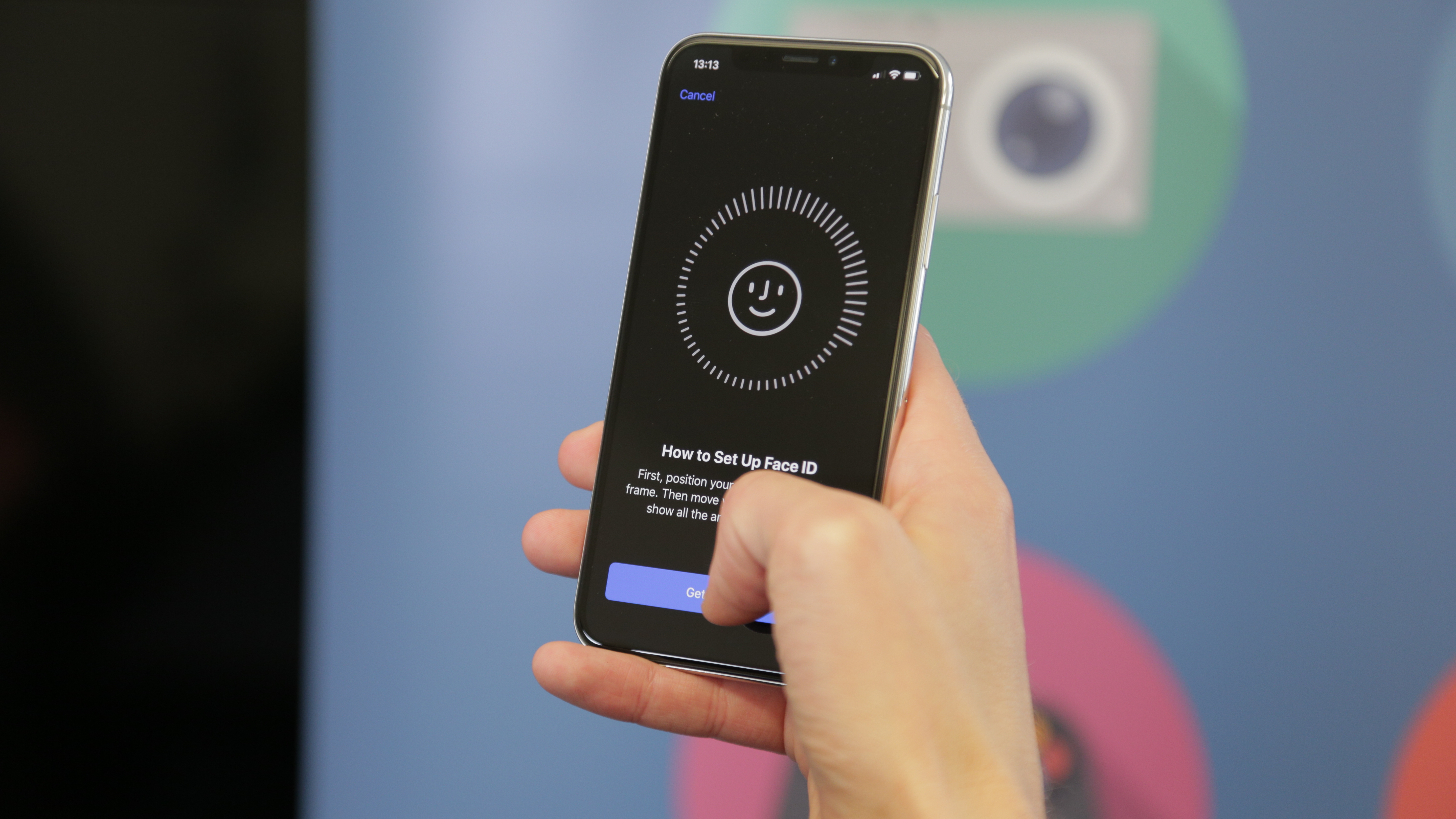
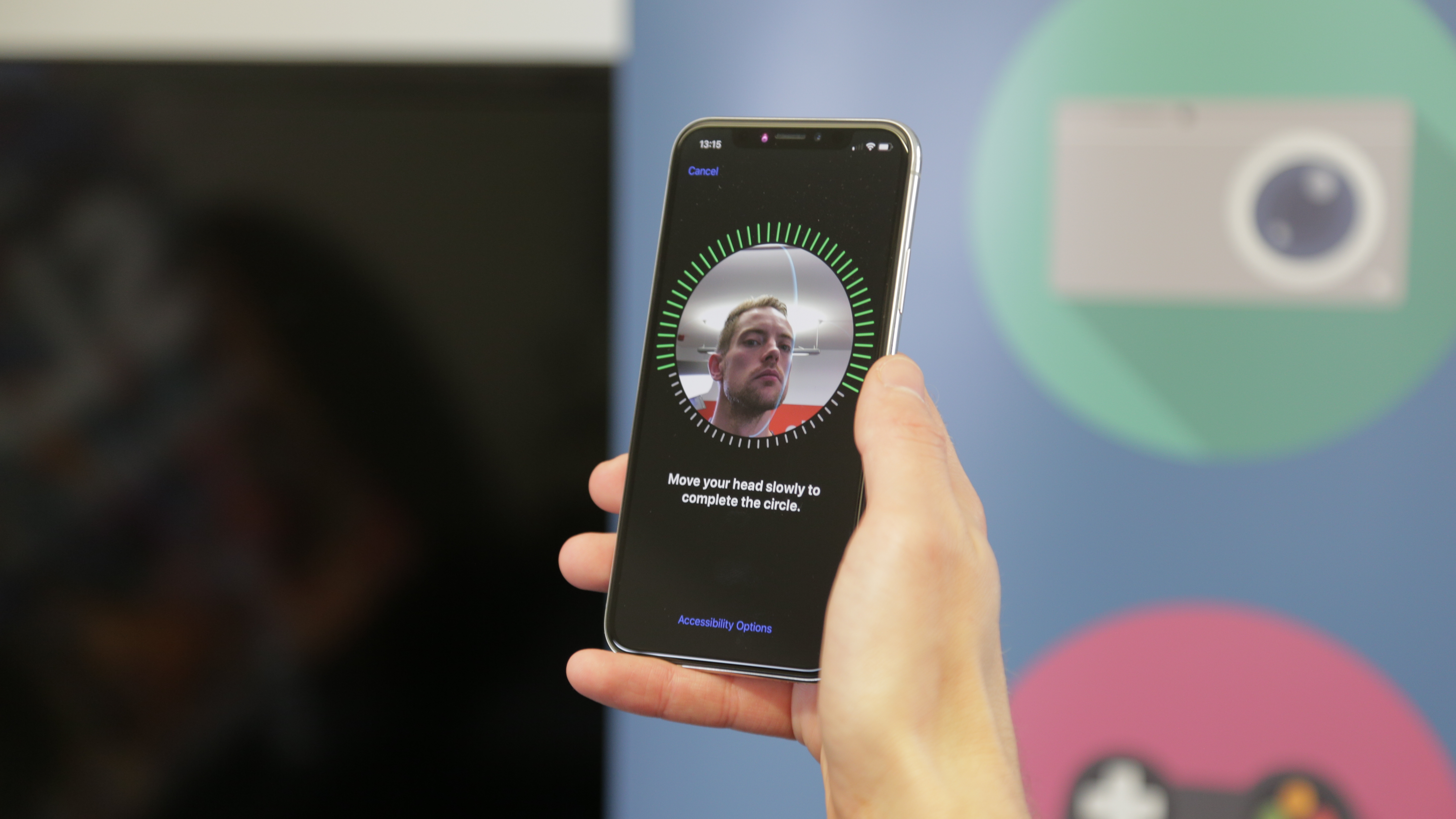
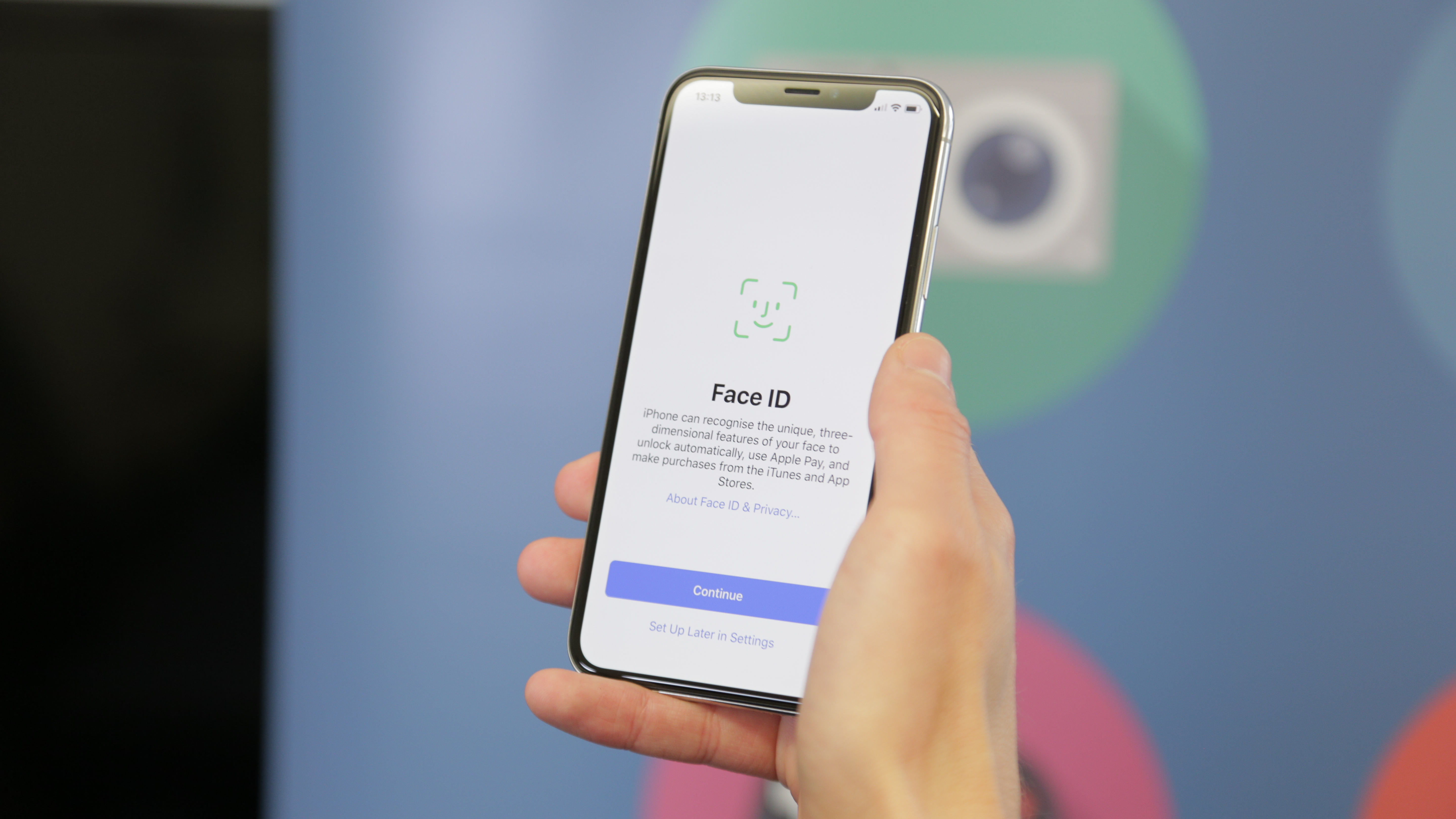
Face ID – Apple’s facial recognition system that replaces the fingerprint-scanning Touch ID – is simple to set up, with the iPhone X encouraging you to put your face into view at the start; spin your head around a couple of times and you're ready to go.
That's all you need to do in order to be able to unlock your phone with your face, and as long as the iPhone X can see your eyes, nose and mouth you'll be able to get into your handset easily.
And we really do mean easily – Face ID has far, far exceeded our expectations for the new biometric technology. We've used facial recognition on other phones many times, and it's been erratic and, well, terrible.
Watch our review of FaceID below.
Apple's facial recognition tech is leagues ahead of anything else on the market right now – it's proved almost flawless in our testing.
Whether you’re in a pitch-black room, in low light or on the move, you simply raise the iPhone X up, look at the screen and you're unlocked, and it’s the same for both unlocking the phone and using apps. As mentioned, we were worried this might be a sticking point for the iPhone, but Apple has nailed it.
That said, some people are finding a few issues with the service – our US mobiles editor Matt Swider has noted that it doesn't catch his face every time, for instance. While we said it works on the move if you raise your iPhone to your face, if it catches part of your face, it'll fail and eventually lock you out of your phone and require a passcode. Some people will yearn for the days of the Touch ID fingerprint sensor.
So that's not to say there won't be some transition required for existing iPhone users. There's a slight, slight delay to unlocking at times (although it doesn't get in the way), and you need to be looking at the handset to make it work – although we did manage to unlock ours while looking elsewhere at times.
Just unlocked Face ID like this, which is incredibly impressive for facial recognition. (These are the darkest glasses I could find...) pic.twitter.com/uHLbWmIWDYOctober 31, 2017
It can even work if you’re wearing sunglasses, as long as the infrared scanner that's actually checking out your face can penetrate the lenses. It won’t work in all cases – it depends if your shades are able to let the infrared beam pass through.
However, we’d guess that in such instances you’ll need to hold the phone a little closer, or use your passcode – much like when you can’t open an older iPhone using Touch ID because you’ve got a wet thumb.

A bigger issue will be if you're someone who leaves their iPhone flat on the desk, and uses their thumb to check out notifications – you'll now have to pick the phone up and look into the screen to see your updates.
We compared the two unlock methods side by side, and it was at that point that we realized Touch ID is a little faster than Face ID – which makes us start to wonder why Apple changed things at all.
While Face ID is a brilliant implementation of facial recognition, and is more secure, it's still not as predictable as your finger finding the same spot time and time again to unlock your device.
We get that there's no space for the home button any more, but there's no reason why Apple couldn't have shoved the fingerprint scanner onto the side of the phone, in the same way as on Sony handsets.
We suspected that Apple might have been experimenting with this option, given that the side button is now larger than before, but Apple’s designers are claiming such a thing was never a consideration.
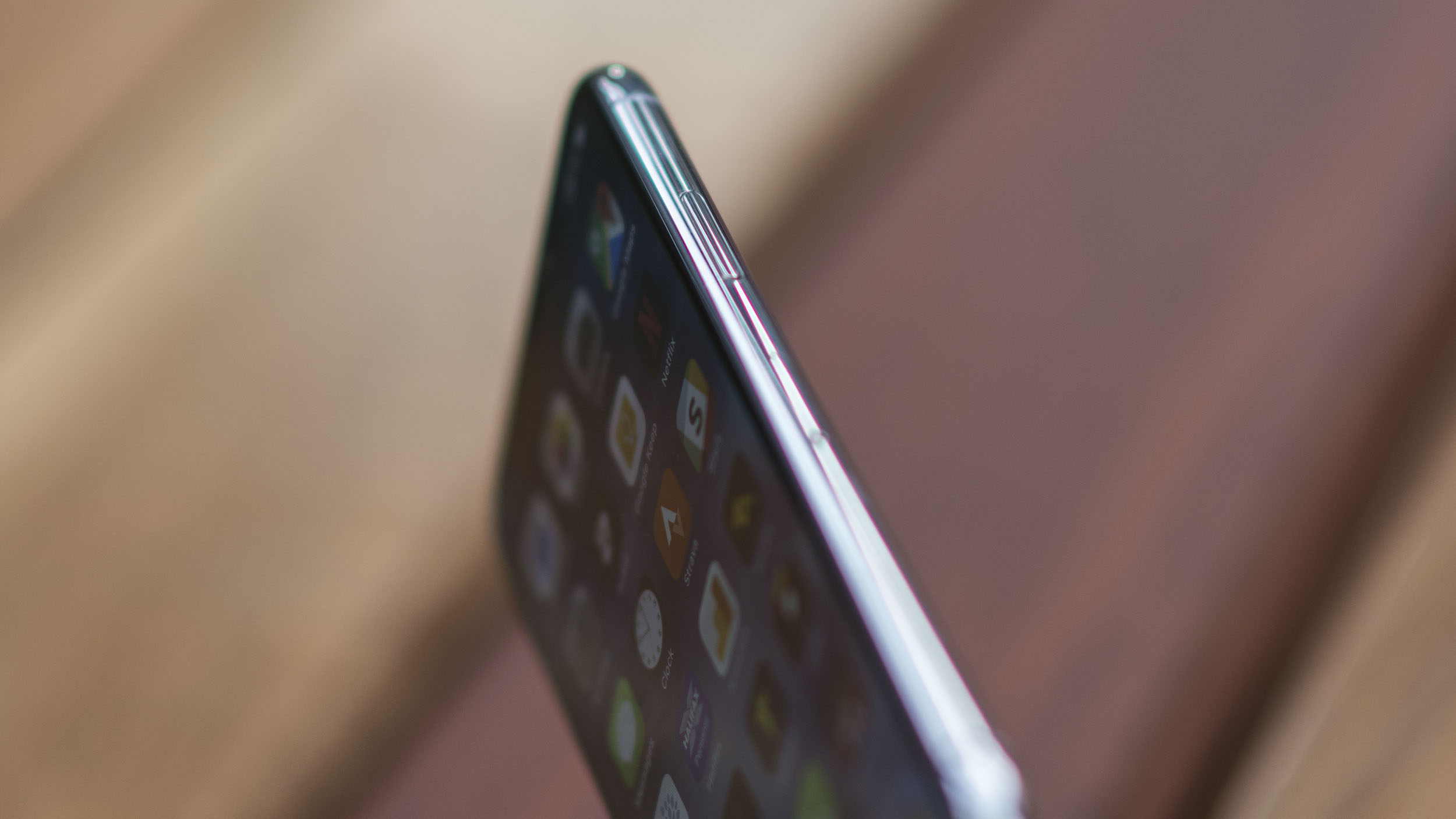
Another issue with Face ID as against Touch ID is when using Apple Pay. Where previously you'd approach the reader with your thumb over the home button and it would instantly verify the payment, with the iPhone X you'll need to double-tap the side button to activate Face ID, have it register your face, and then it'll be ready to pay.
It's not a tough system to master – after a single attempt we were able to replicate it time and again – but it's not as easy as before, which is irritating. You'll sometimes believe you double-tapped the side button, think you didn't actually double tap it, tap it one more time to be sure, and realize you did double tap initially and triple tapped. This turns off the phone right as Apple Pay pops up, making your quick payment slower than paying with cash. Sometimes the Apple Pay menu is too slow.
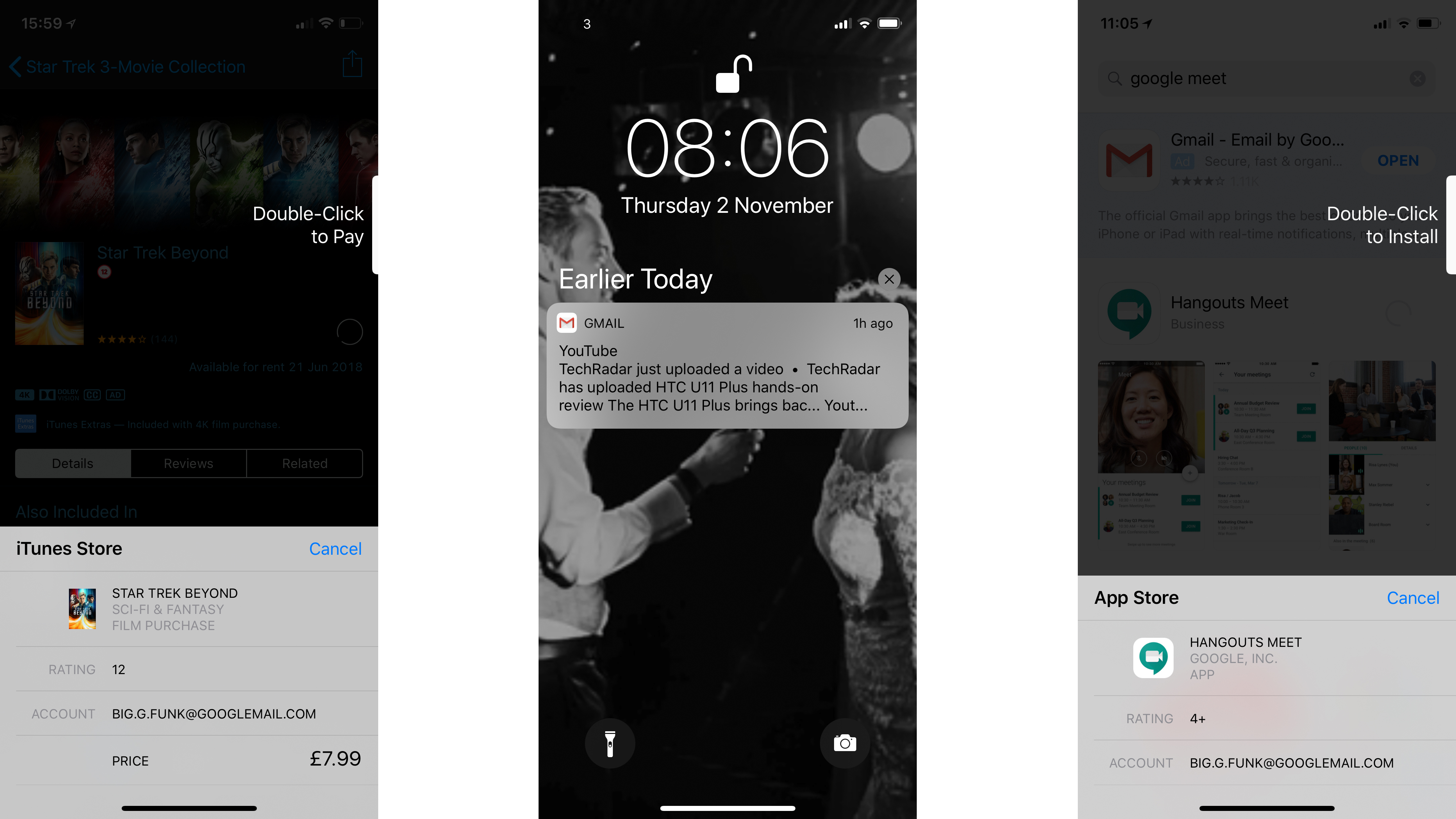
Face ID is enabled by the TrueDepth camera, which is housed in the notch at the top of the phone, and one has to wonder whether Apple has shifted to the facial recognition technology to simply have something new and exciting to help sell the new iPhone.
There's no doubting that the facial mapping camera is powerful – it's incredibly accurate – but there's not much you can do with it right now, as few apps have taken advantage of the feature. Given the TrueDepth camera is probably adding a fair bit to the cost, perhaps that's part of the reason to push Face ID.
Another thing the TrueDepth camera facilitates is Portrait mode, where the background is blurred in your selfies, and it's excellent.
We'll speak more about that in the camera section, but the new technology has allowed Apple to create one of the best front-facing cameras on the market.
Animoji
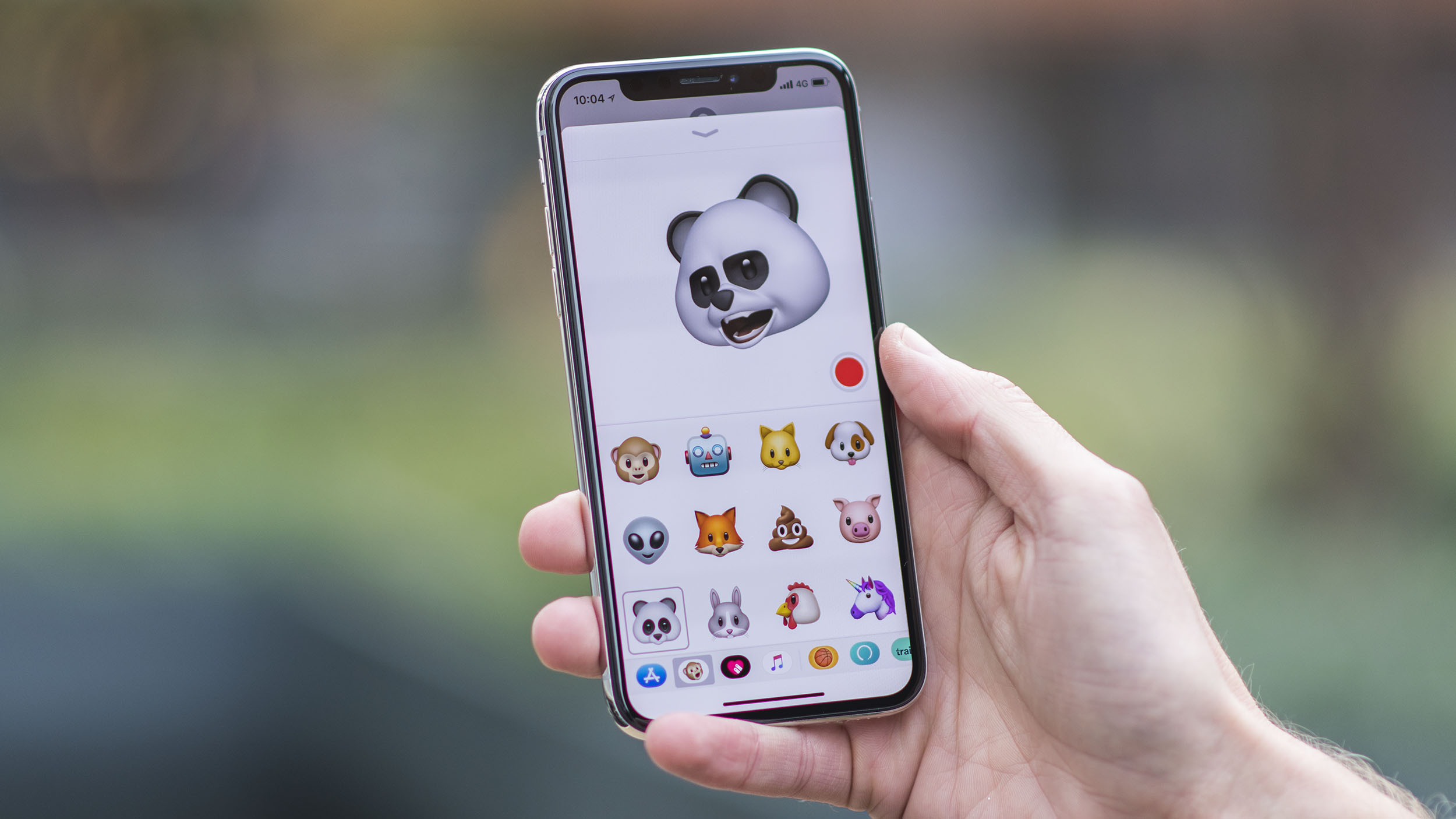
You've probably heard a fair bit about Animoji already, the feature that enables you to create talking emoji using the TrueDepth camera and your own face.
It's a really fun system – you can be a talking robot, cat, dog, unicorn or piece of poo, among other avatars. The impressive thing, though, isn't that you can send an animated emoji to your friends, but the sheer accuracy of the facial mapping.
Whether that's a flicker of the eyebrows making a unicorn's ears flap, or raised eyebrows pushing an alien's brow upwards... it's something you won't have seen elsewhere to this level of quality.
But it's a massive novelty. It's not something you're going to buy this phone for, and after a few days you'll forget it's there. This is very much something Apple does – adding in a feature that's not a deal-breaker, but which could be useful in the future.
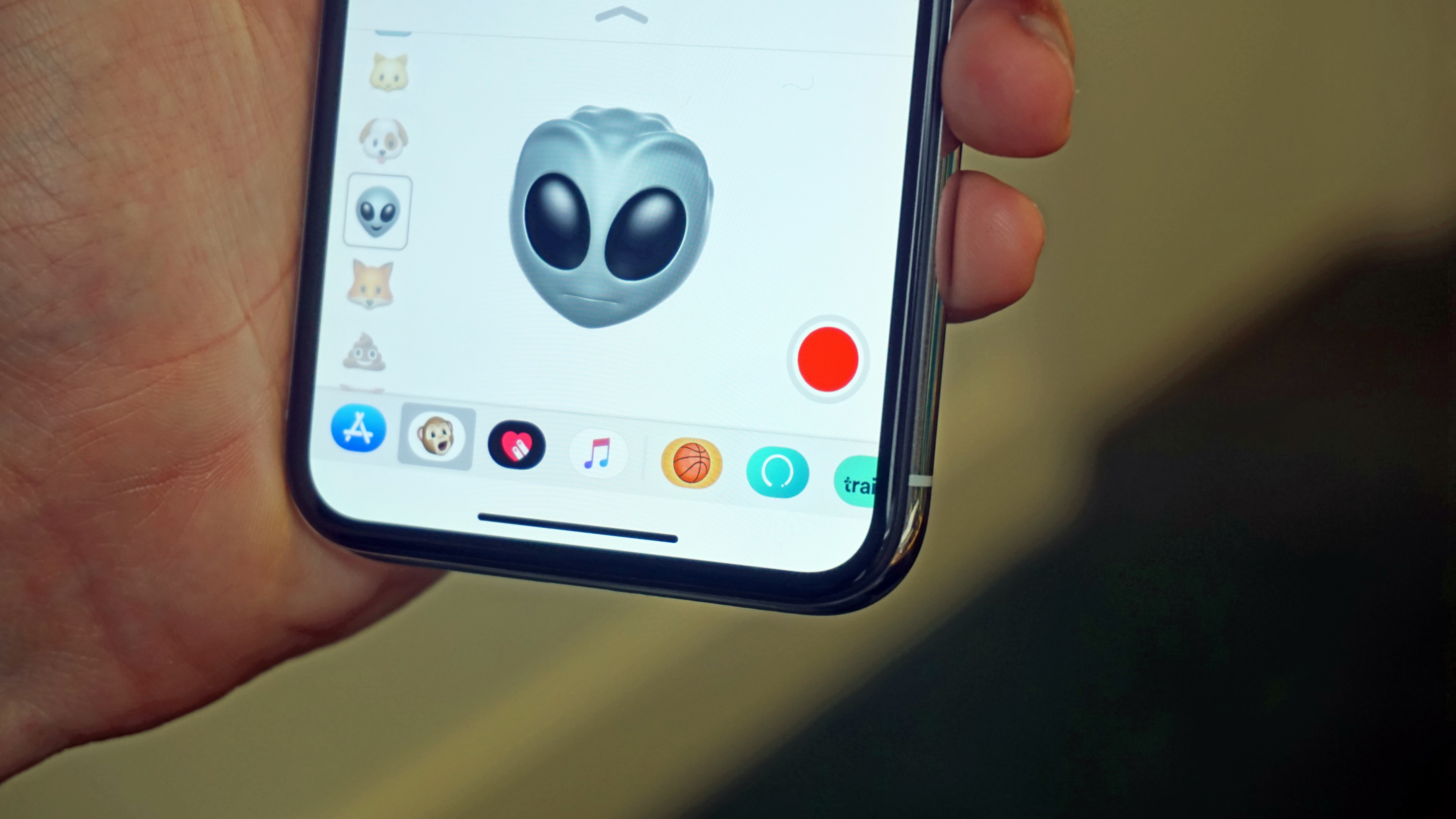
And while you can share the videos with friends in apps other than iMessage, it's not easy to do. And if your friends don't have an iPhone X, you can still send them Animoji, but they'll want to reciprocate and won’t be able to. This feature really needs to roll out to other apps - or at least those developers need to code in a similar option. Apple hasn't done that yet, though it has added four new Animoji masks with the iOS 11.3 update.
This is a feature that will delight children, and we can see how developers could create some really cool apps for kids using the front-facing camera on the iPhone X; but we're still in the 'wait and see' phase as to whether the TrueDepth camera is going to be a gamechanger or just a nice piece of expensive hardware.
- It’ll take some time to get used to new gestures
- Surprisingly easy to use one-handed
- One of the most powerful phones on the market
Watch our review of the UI and performance of the iPhone X below.
While the iPhone X launched with iOS 11, it's now been updated to iOS 12 (or iOS 12.1.4 to be precise). This added things like grouped notifications, personalized Memoji, additional Animoji and emoji, Siri Shortcuts, Group FaceTime, Screen time reports and a whole lot more.
It'll update again in late 2019 to iOS 13, which will bring with it features like a Dark Mode and a new Find My Device app, but for now if you're using an iPhone X you'll be using iOS 12.
You can read about it all in detail in our iOS 12 guide, but for a rundown of the software the iPhone X launched with (most of which still applies), and of how navigating the phone feels without a home button, read on.
If you’re running a recent iPhone, perhaps something from the iPhone 6 and above, then you’ve probably already tried out iOS 11… but it’s rather different on the iPhone X.
The main difference is the home button – or lack thereof, as you’ve probably already noticed. This has been replaced by gestures, and suddenly Apple’s desire to get all swipey in previous iterations of iOS makes sense today.
Swiping up from the bottom of the screen no longer launches the Control Center, but rather serves as a return to home button. This takes a lot of getting used to, but it quickly becomes embedded in the muscle memory.
Within a few days we were trying the same action on other phones out of habit, and it’s reminiscent of the way you’ll open up the menu on a Samsung phone – it just feels like it’s in the right place.
However, beyond that Apple has made things a little too convoluted. To open the deck of running apps, for example, you need a ‘demi-swipe’ upwards… go too far and you’ll just access the home screen.
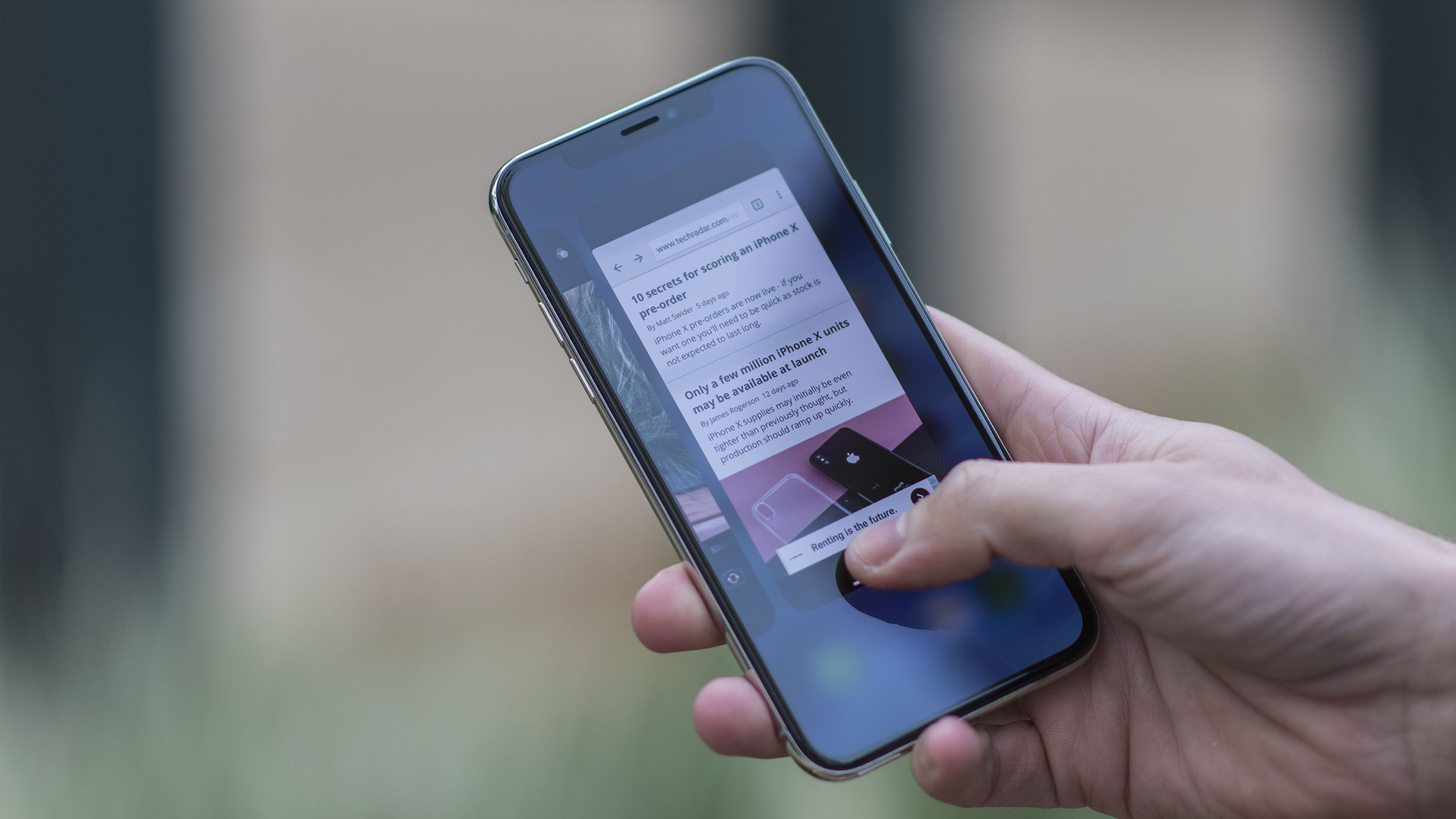
To shut down said apps, it’s no longer a swipe but a press then a swipe. This doesn’t feel intuitive at all, and shows Apple had to reach a little too far to integrate all the functionality into gestures.
We must say that although we didn't like the gesture where you swipe right on the bottom of the screen to move between recently-used apps at launch, it's grown on us and suddenly makes more sense to use. Apparently it makes sense to Google too, as Android Pie uses this functionality as well.
The Control Center now lives to the right of the notch at the top of the phone, with the notifications panel on the left. This does make sense, and we actually prefer the placement of these two – having the Control Center at the bottom got in the way of too many apps in the past.
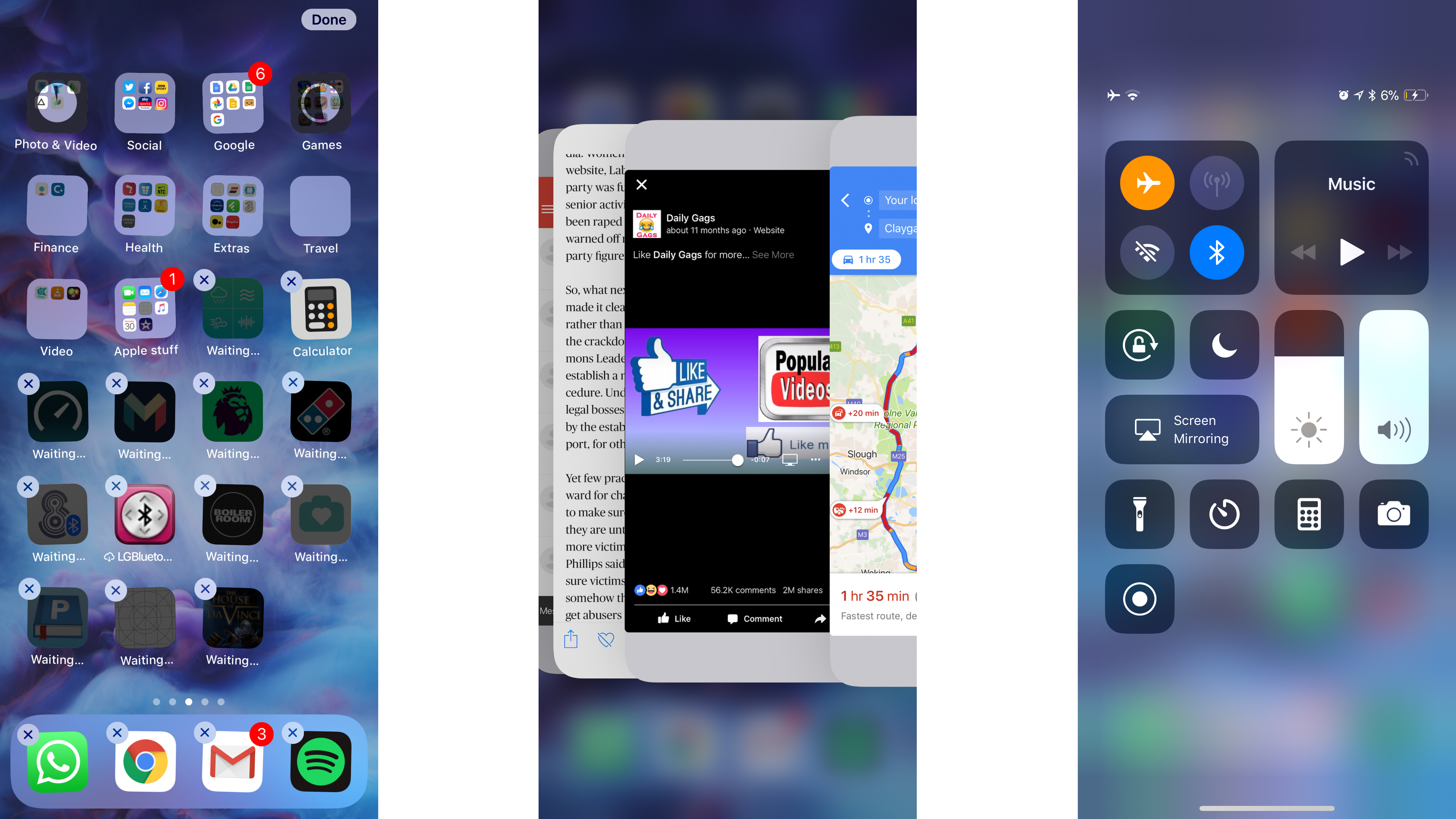
If you’re using the iPhone X in landscape mode though, you’re going to run into trouble. It appears that without the notch there to separate them, the notifications panel takes up the bulk of the space at the expense of the more-useful Control Center, and you’ll need to swipe from exactly in the top right-hand corner to get access to the latter.
On to day-to-day use of the iPhone X, though, this thing is buttery smooth, with nary a glitch in sight (apart from Animoji, which kept freezing on us). That’s the benefit of bringing out a phone with the new version of iOS out on the market – a lot of the kinks have been ironed out.
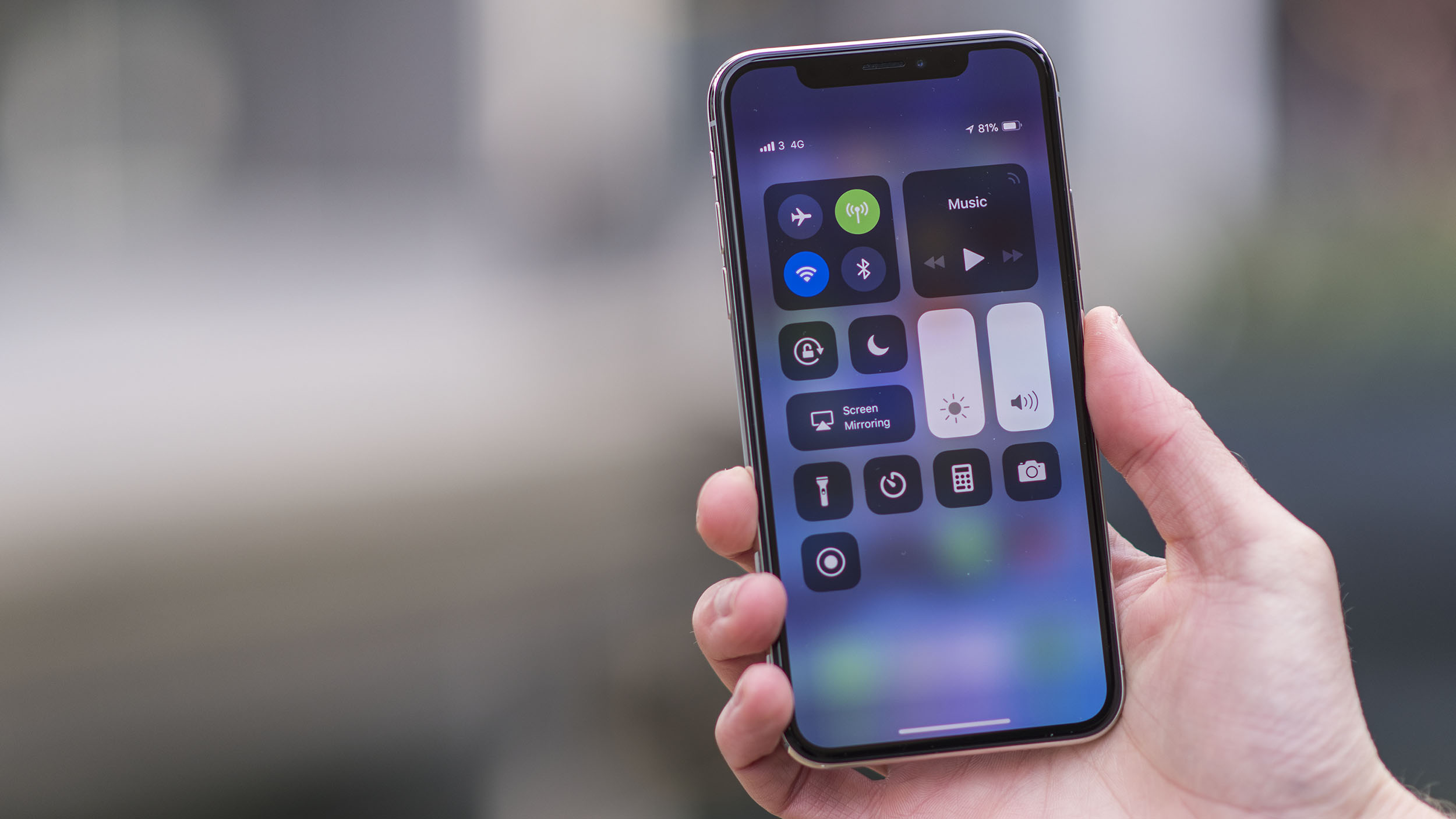
There’s a powerful engine at the heart of this iPhone, with the A11 Bionic chip running in tandem with 3GB of RAM (according to Chinese filings). That doesn’t sound like much RAM, but it’s the most Apple has ever chucked into a phone, and it shows in the speed of use.
If you look at the Geekbench scores, which assess the raw power of the processor, the iPhone X is one of the most powerful phones on the market, only rivaled by the iPhone 8 Plus.

And while you can’t say how good a smartphone is based on its scores, we’ve seen nothing during our tests to suggest this is anything other than an incredibly powerful phone.
There’s very little judder anywhere (although in low-power mode everything does slow down a lot – far too much for a simple power saving when there’s this much power coursing through the iPhone X), and that’s a sign of a well-optimized handset.
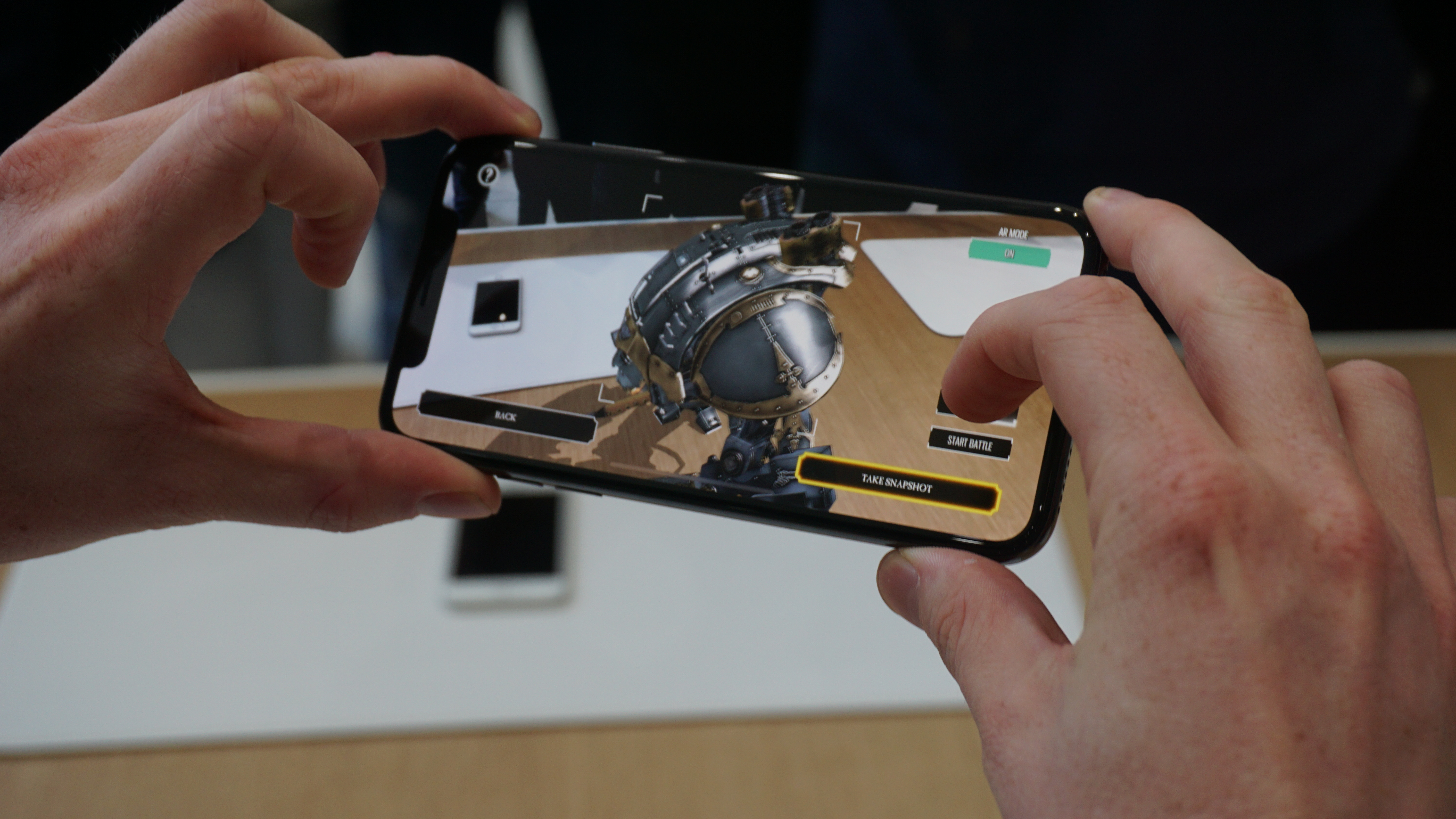
Gaming on the iPhone X is predictably strong too – we’re at the point now where there are barely any titles that don’t play well on flagship devices, given the amount of power under the hood.
The new penchant for AR gaming, where games are played within a within a plane overlaid on your real-world surroundings, is a key part of Apple’s new strategy and we managed a game of The Machines with aplomb (and that title has already been optimized for the iPhone X’s screen, pleasingly).
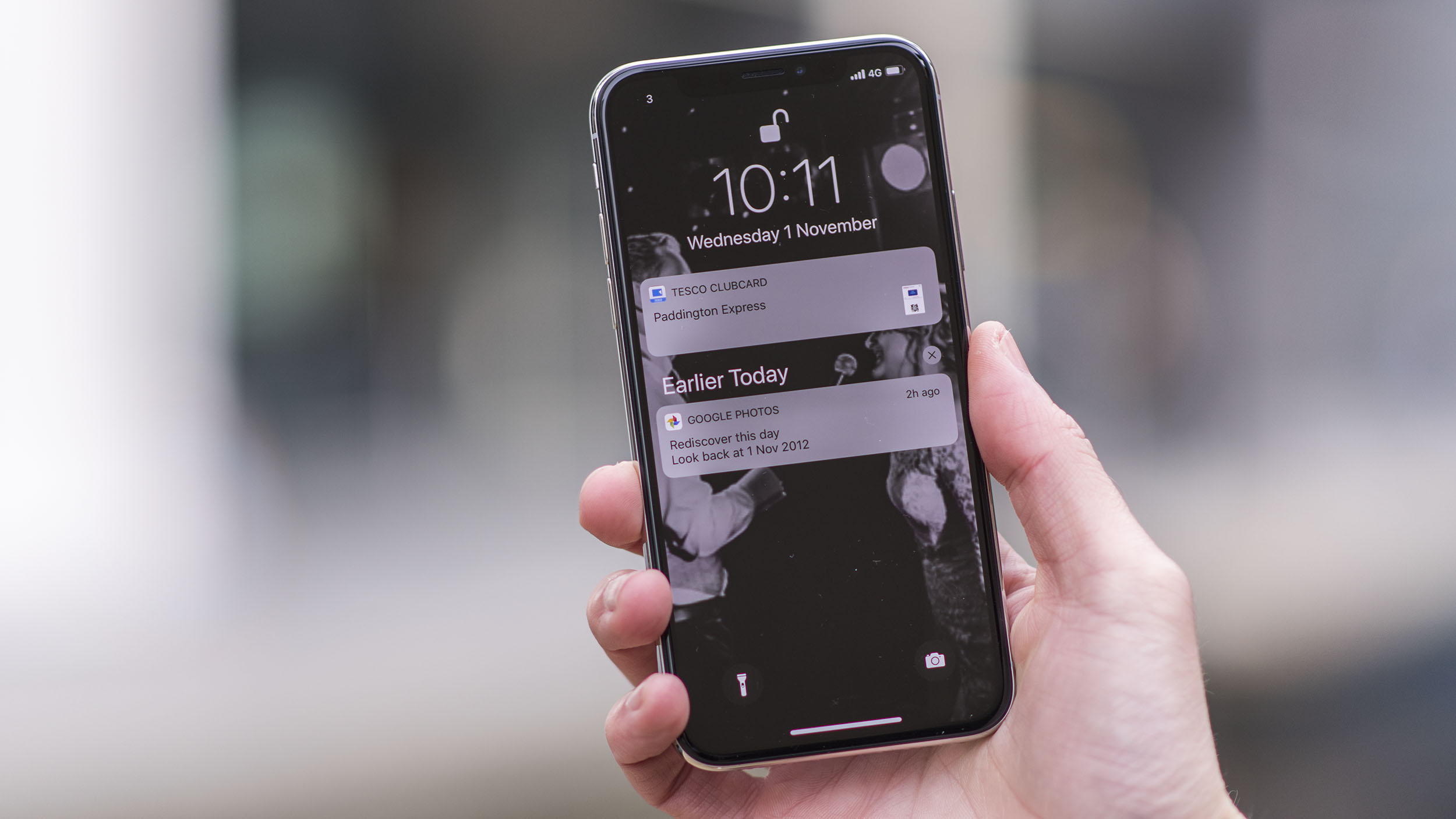
The other thing is that top gaming titles look bright and colorful on the OLED display, so all in all the iPhone X is a top choice for gaming. The only downside is that gaming seems to deplete the battery rather quickly, but that’s nothing new from Apple.
And don’t forget about the excellent Taptic Engine (the vibrating motor) inside – this might have appeared in previous iPhones, but it really enhances gaming.
You’ll get a real sense of a machine-gun firing, taking hits yourself, or flipping through a list with a real clicking feel in the hand.
- A new premium design language
- Glass back for wireless charging
- Feels weighty, in a good way
The design of the iPhone X is very much a mix of old and new. The new parts are obvious: this is a phone with very little bezel, a glass back and no home button.
But it's also got the familiar rounded shape in the hand – in fact, it harks back to the days of the iPhone 3G, feeling similar when picked up.
What you will sense when holding the iPhone X for the first time is that this is a premium handset. It feels expensive, with the weighty steel rim on the outside blending in impressively with the curved glass all around.
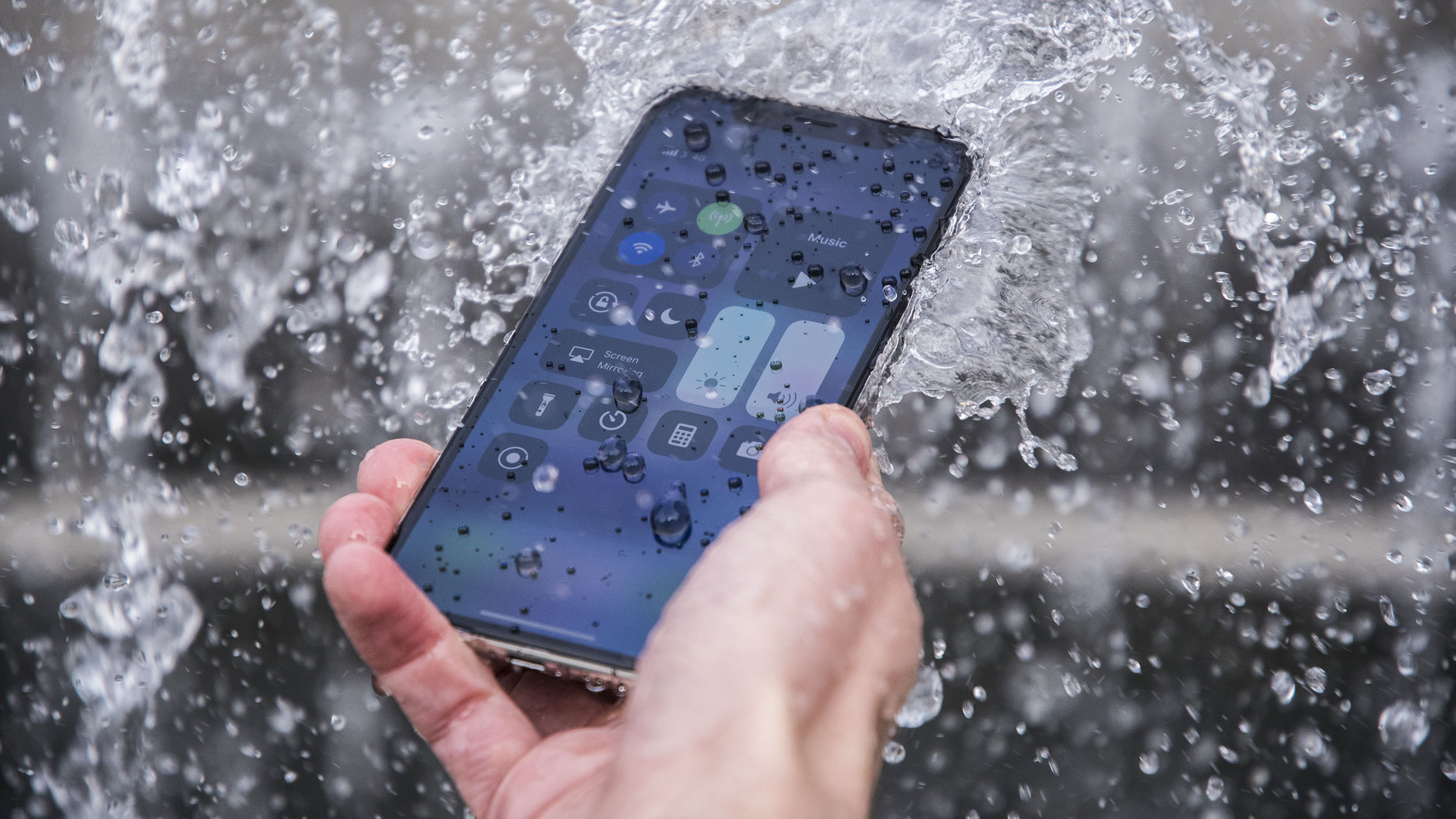
The silver version of the X comes with a polished stainless steel band, while the black option has a similar dark coloring that's been attached through a process called vapor deposition. It's also why we may not see a red iPhone X.
That means the band’s color isn’t painted on... it's inside the metal itself, giving the premium feel we're used to from Apple. A word of warning: after a few days carrying the phone in the pocket, unencumbered by an iPhone X case, we started to see a few examples of scuffing on the rim, so it's worth thinking about putting this in a case, or at the very least a skin, if you want to keep it looking nice.
While it weighs less than the iPhone 8 Plus (174g compared to 202g), the iPhone X feels a lot heavier in the hand, in a good way.
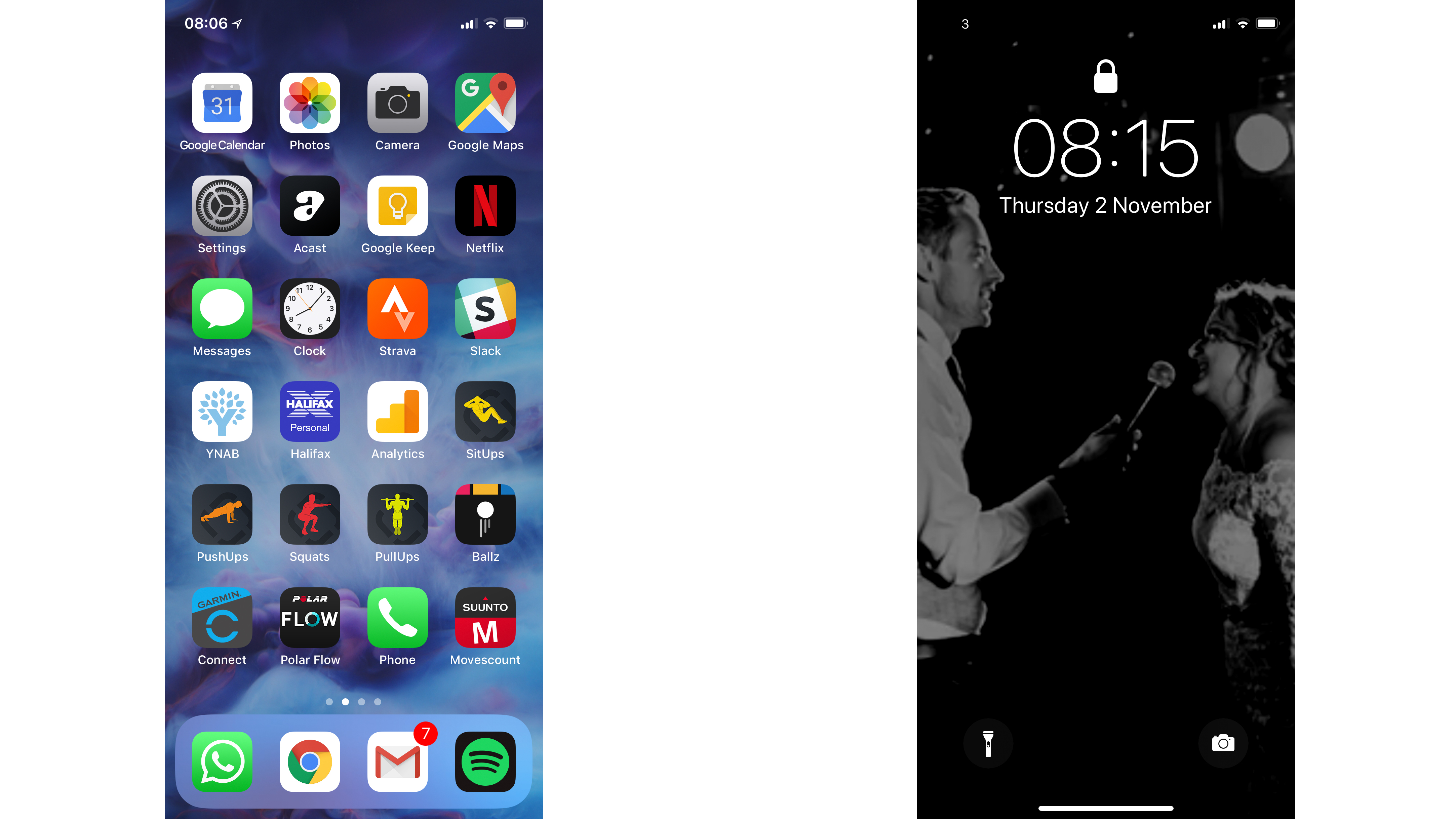
You’ll feel like this is a strong, solidly build handset (and don’t forget, it’s still IP67 water-resistant) and you’d be right – despite it being glass front and black, Apple believes it's made the strongest iPhone yet.
We really don't feel that you could bend the iPhone X by sitting on it...
One negative thing to say about the design: it's a smudge sucker. The outer band gets covered in fingerprints in no time at all, and the glass front and back will happily accept any oil your fingers want to deposit on them.
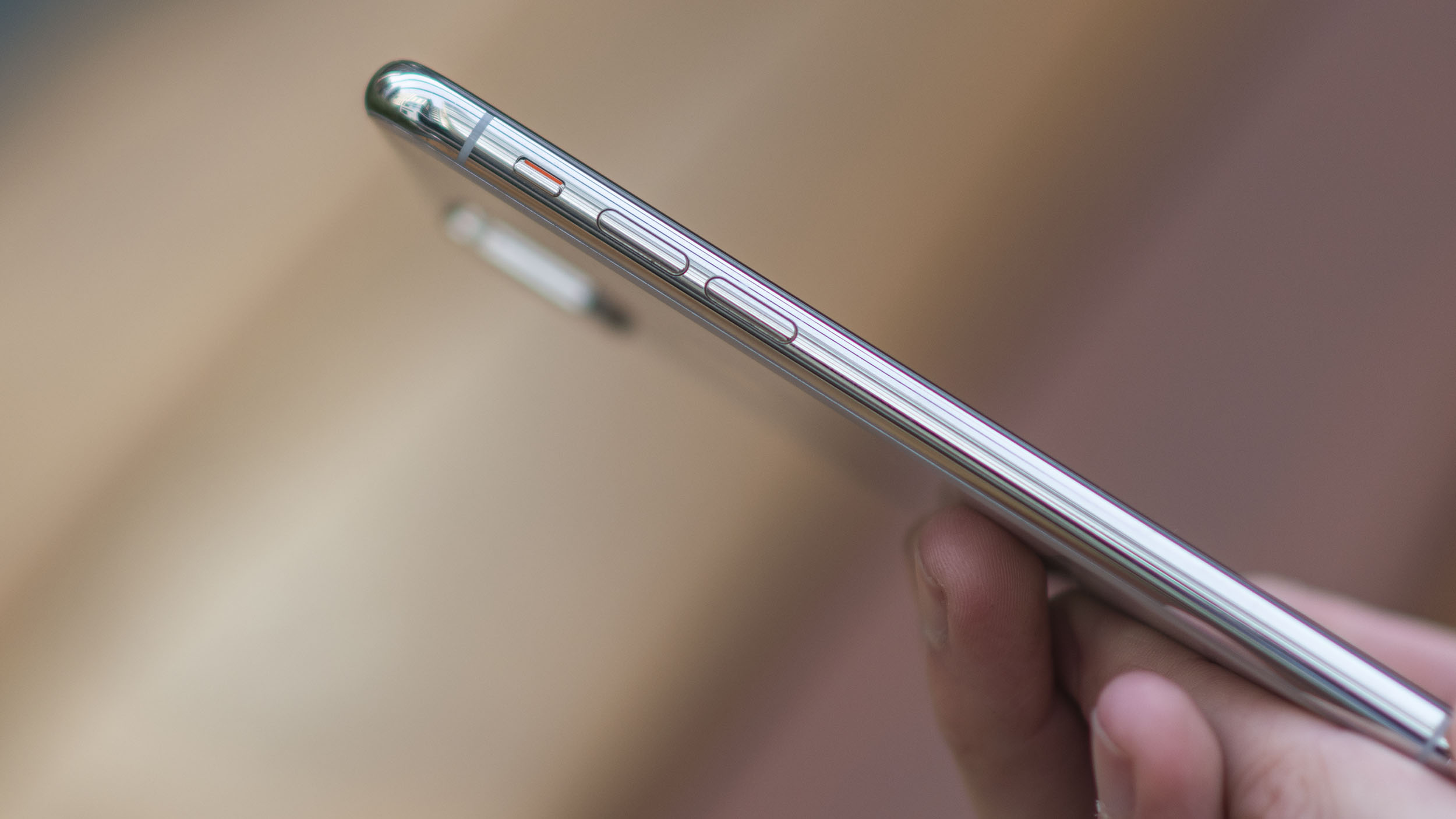
And while the rear of the phone is glass, as on the iPhone 8 and 8 Plus, there’s a different design language at play with the iPhone X. Every button is elegantly embedded into the rim of the phone, yet there’s a sharpness to each key that comes from them being machined in a certain way.
The same is true of the protruding camera bump on the rear of the phone – the edge is sharp, where on the iPhone 8 it rolls into the case. This shows that Apple is taking a new design direction with the X, hinting at the short-term future of iPhone design.
In terms of how the iPhone X feels in the hand, well, it’s surprisingly easy to use one-handed. It balances naturally in the hand, with the glass and metal combination feeling grippy enough to do so, and most thumbs will be able to roam comfortably over the slippery surface like a little flesh-colored penguin.
You’ll need to drag down the notifications panel and Control Center with the digits of your other hand on most occasions, but generally the iPhone X is a good mix of phablet-sized screen while being ergonomic enough to use in one hand.

A special mention to Apple for the way it’s incorporated the speakers into this tightly-packaged phone – the sound is really something, with full volume making the phone reverberate with audio.
Despite one of the speakers firing downwards from the bottom of the iPhone X, you can easily listen to movies without headphones – and the irritated glances from colleagues when we tested out this phone in the office shows that the sound can carry pretty far too.
There have been reports of a crackling speaker in some models - however, we've not seen that in the wild and our model was able to crank to full volume with ease.
In terms of sound, it’s worth reiterating that there’s no headphone jack on the new iPhone range – Apple has made a big bet that it can convince users to leave their 3.5mm headphones behind for AirPods, but it still annoys for now if you don’t have a decent pair of Bluetooth headphone or lose the adapter that comes in the box.
- Great cameras front and back
- Better in low light than before
- Not quite the best in class, but very close
Watch our review video outlining the camera on the iPhone X below.
The camera on the iPhone X is very similar to the one on the iPhone 8 Plus, with some small differences.
For instance, while both have a dual 12MP sensor array (for taking zoomed-in pictures, or capturing depth perception in a scene) the iPhone X has an f/2.4 aperture, where on iPhone 8 Plus it’s f/2.8, and only the wide-angle lens has optical image stabilization.
It was also dubbed the best camera on the market by DxOMark, although only for still images, showing the technical prowess of the sensor (though it has since been surpassed by numerous phones, with the the Huawei P20 Pro, Huawei Mate 20 Pro and Samsung Galaxy S10 Plus now sitting at the top).
Before we get too far into the performance of the rear camera, let's talk about the front-facing TrueDepth camera, which is a 7MP affair but with some smart capabilities to make the iPhone one of the best selfie-taking cameras on the market.
The camera, as the name suggests, can sense depth incredibly well, so the new Portrait mode – debuted on the iPhone 8 Plus – can be used with the front-facing camera to take excellent selfies.
Not only will this blur the background, you can also use the Portrait options to change the lighting of the scene, or cut yourself out of the picture altogether and place yourself on a black background.
The lighting alterations, adding things like contoured lighting to your visage, don't really add a huge amount, and some of the 'stage lighting' pictures that cut you out of the image don't always trace the edges of your head and body perfectly.
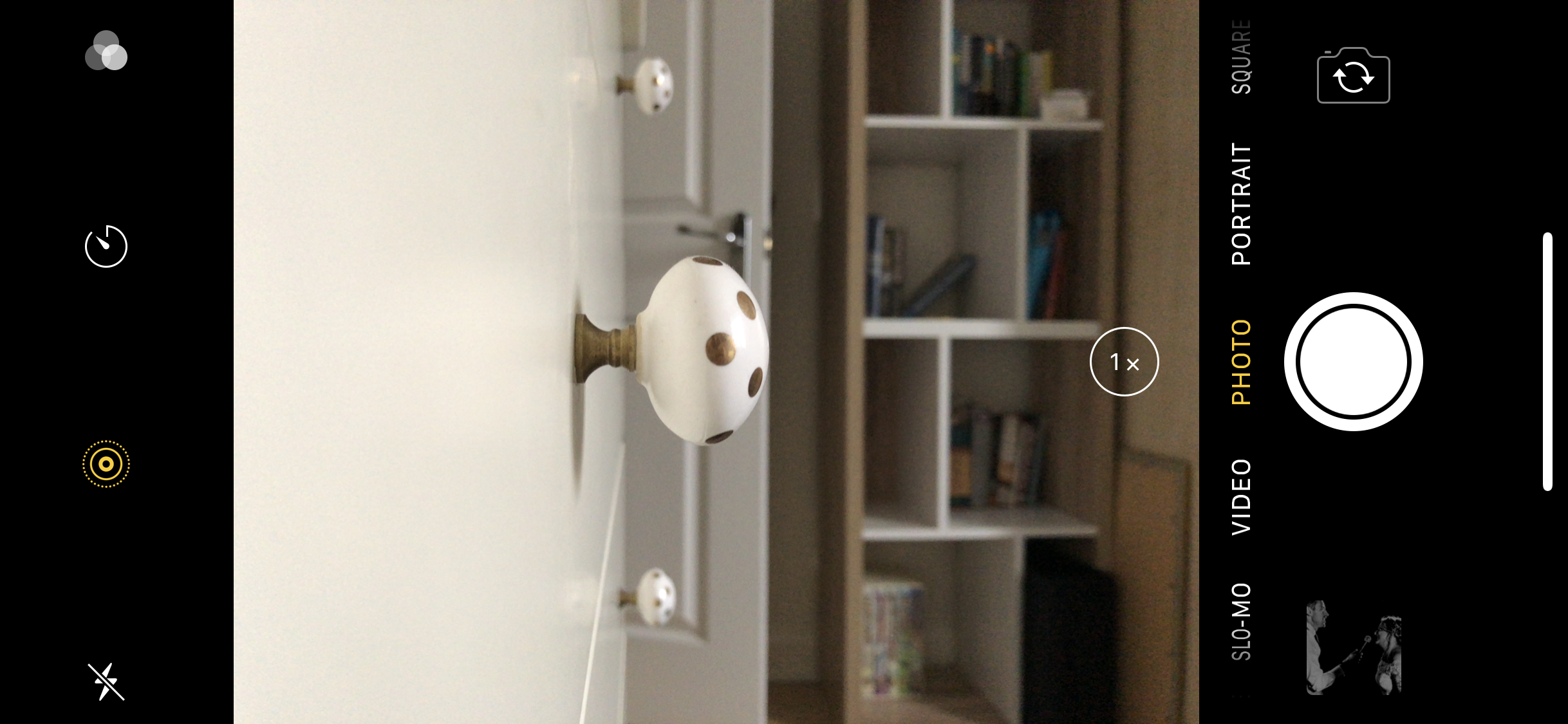
But when it does work, the iPhone X's camera is out of this world – it delivers stunning shots that are rich with detail, and while it's not the best smartphone camera on the market it takes natural-looking photos very well, and that's something a lot of people will celebrate.
Those pictures look far better on the X’s OLED display too, thanks to the improved contrast ratios and better colors, although sharing the same pictures to an Apple TV shows they’re a little brighter than on the phone screen.
While the iPhone X is a long way from being the first handset from Apple to use Live Photos, this feature is improved in iOS 11 – being able to loop, bounce or long-expose photos is a fun little extra that you can share with friends well.
The overall speed of snapping and quality of the iPhone X camera is strong, as you’d expect from a flagship handset from Apple with the new A11 Bionic chip inside.
Low-light performance is a touch better than from previous iPhones – although it’s curious the way the iPhone 8 Plus and X have different apertures, yet deliver the same kind of zoomed-in low-light performance.
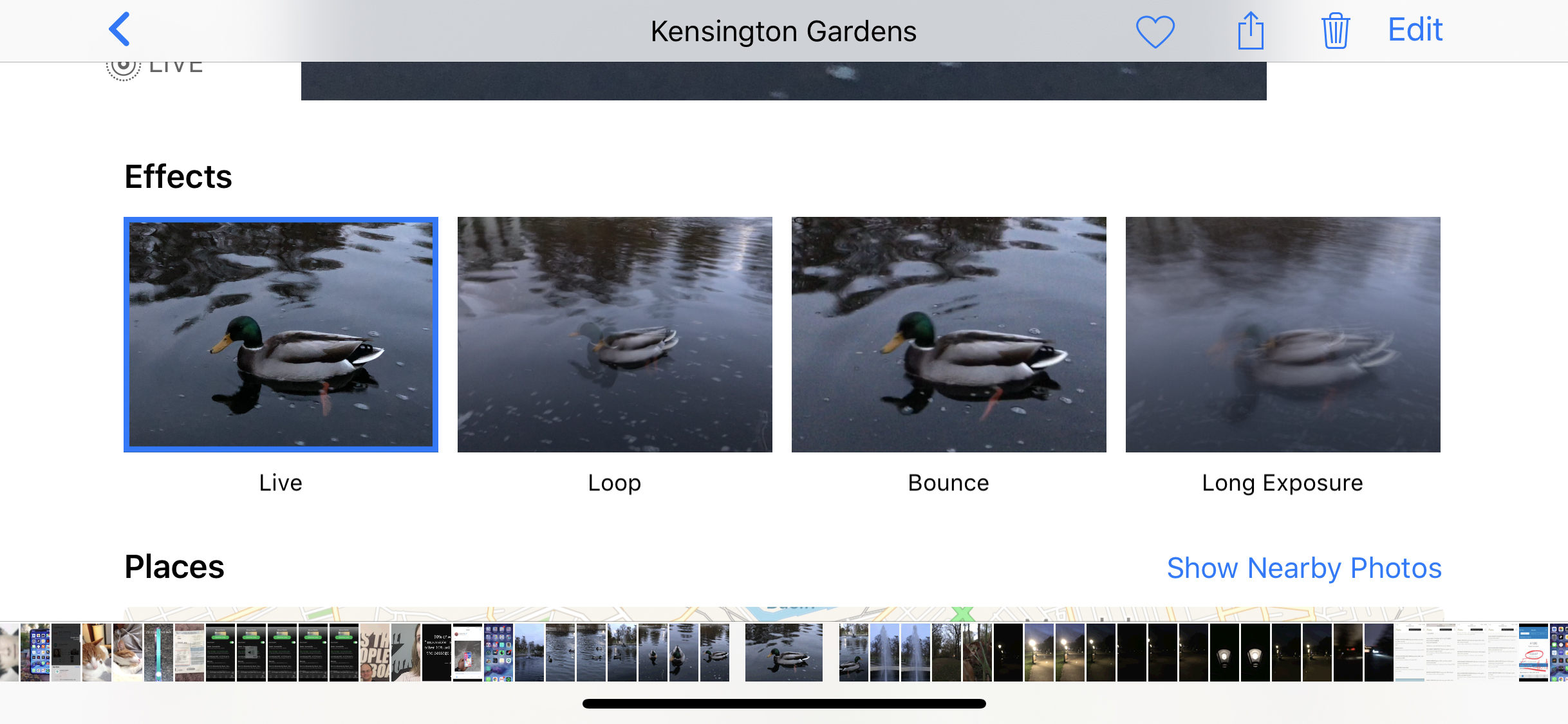
In real terms, the f/2.4 aperture and optical image stabilization on the zoom lens should mean better low-light photos, but when you’re zoomed in sometimes you’re not actually using the optical lens (which is designed for the task) in favor of the more dark-adept 'main' lens.
This is a good thing. Instead of using the zoomed-in sensor for low-light pictures, the iPhone X uses the wide-angle lens (which has better low light capabilities) and uses digital zoom to get the best looking snaps.
It's hard to say why Apple has bothered to improve the other sensor if this is what it's going to do, but the main thing is picture quality and that's coming through well.
Some of the shots from the iPhone X are astonishing – the performance in lower light conditions, when the light is fading, is really strong, although the slower shutter speeds do lead to a touch more noise and blur.
The camera could do with booting a touch faster from the lock screen (although you can now 3D Touch - push hard - on the photography icon to load the camera, rather than swiping), but generally it’s hard to fault the natural, clear and crisp photos you’ll get from the iPhone.

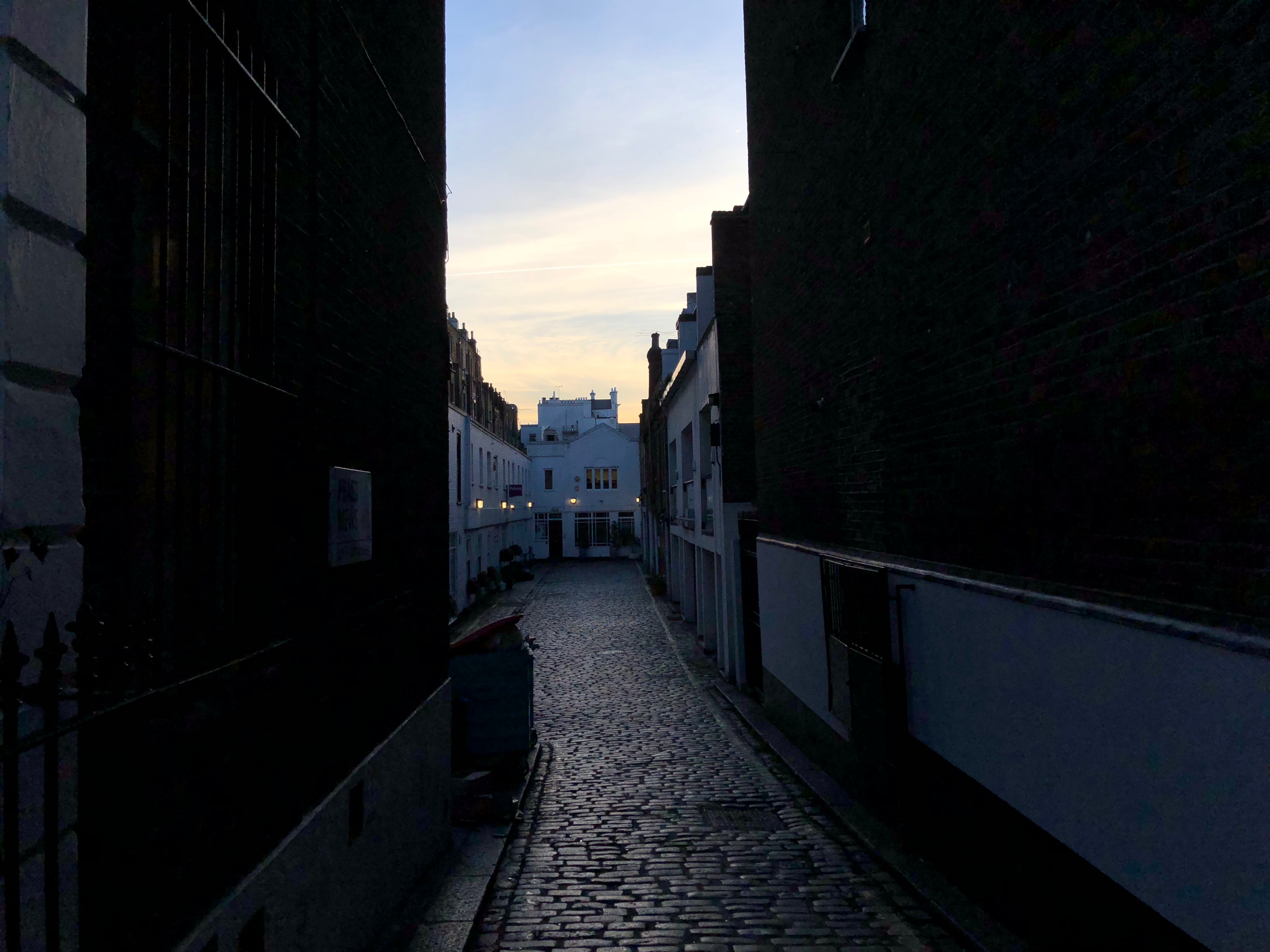
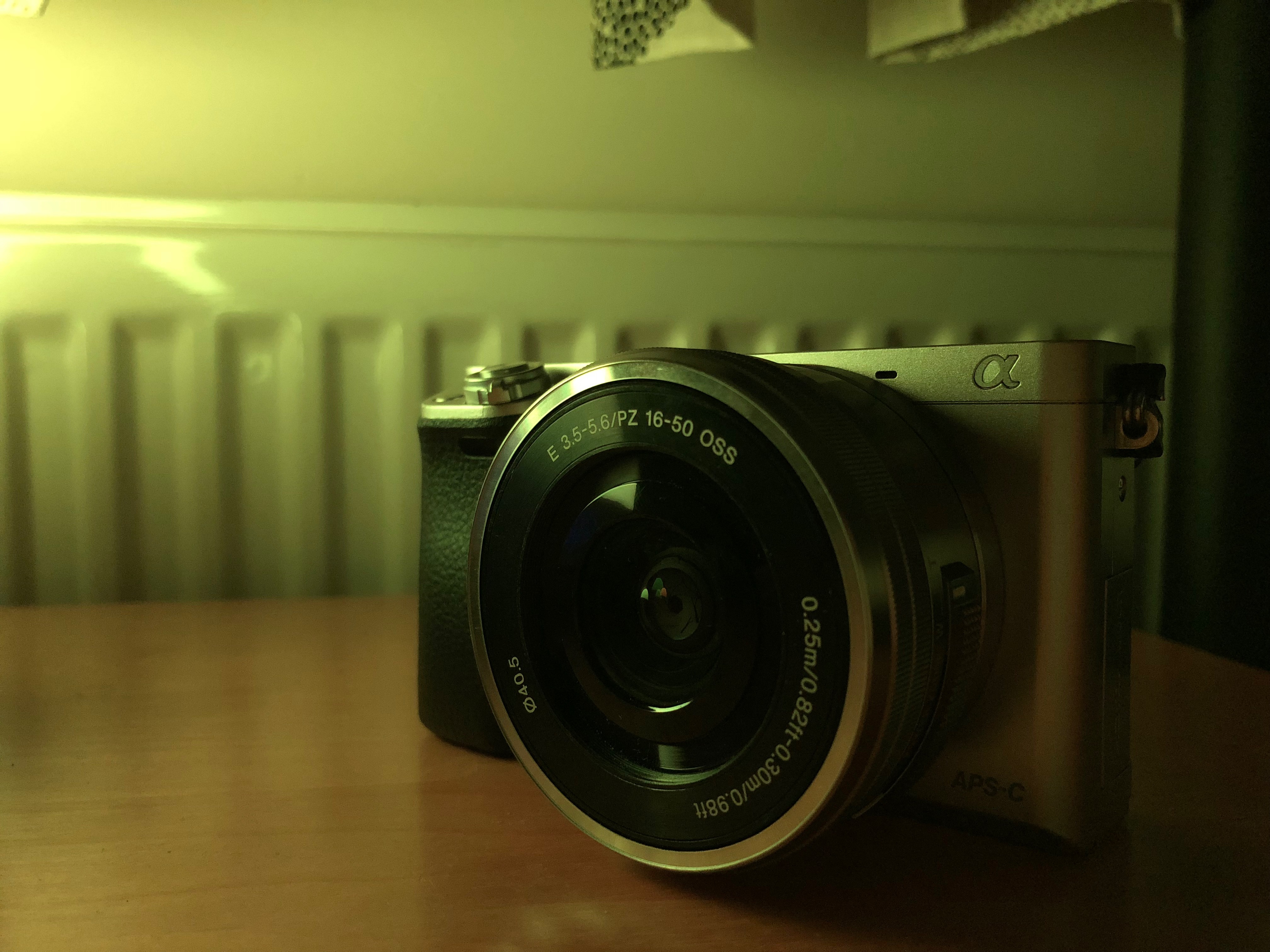




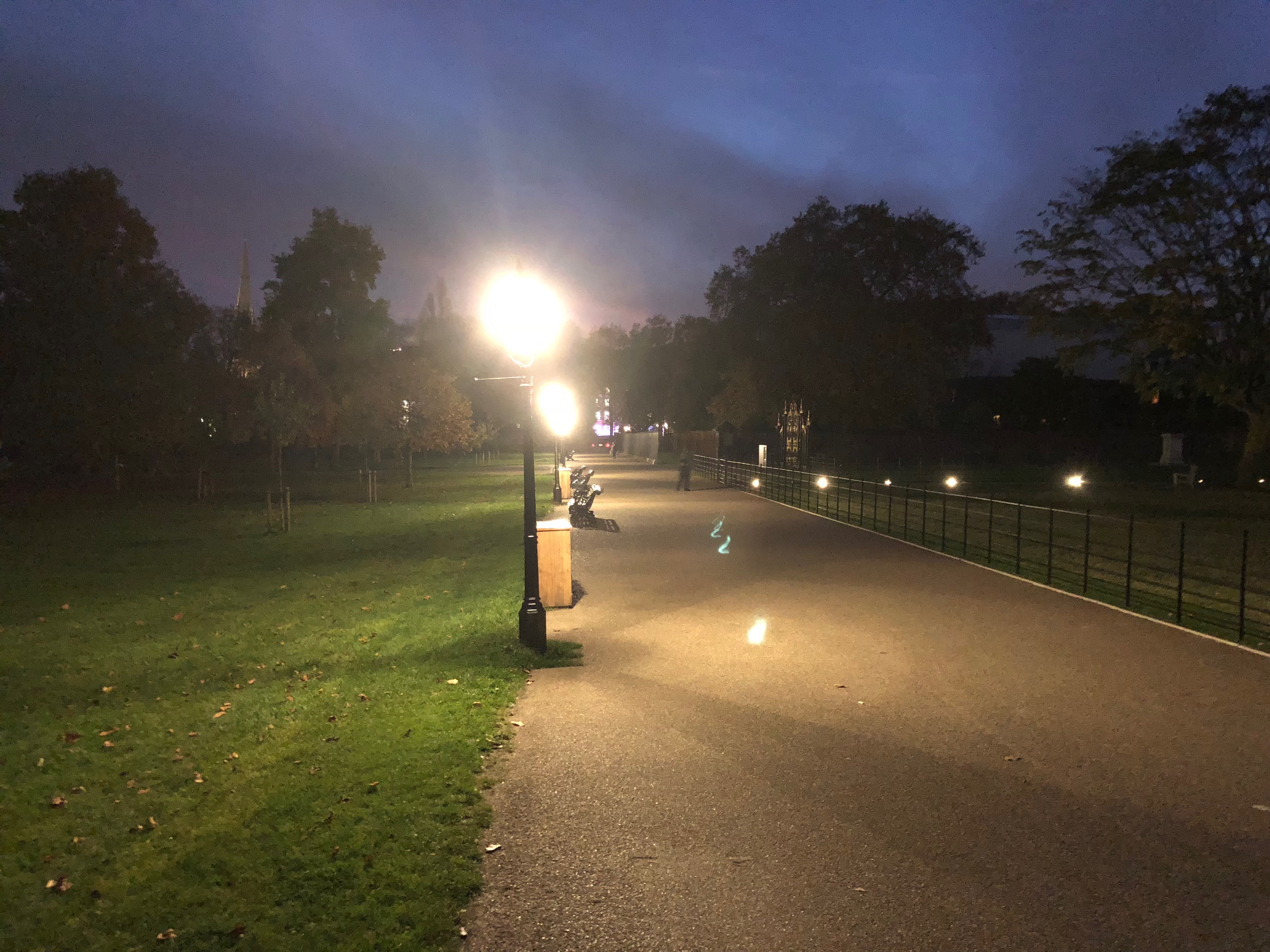
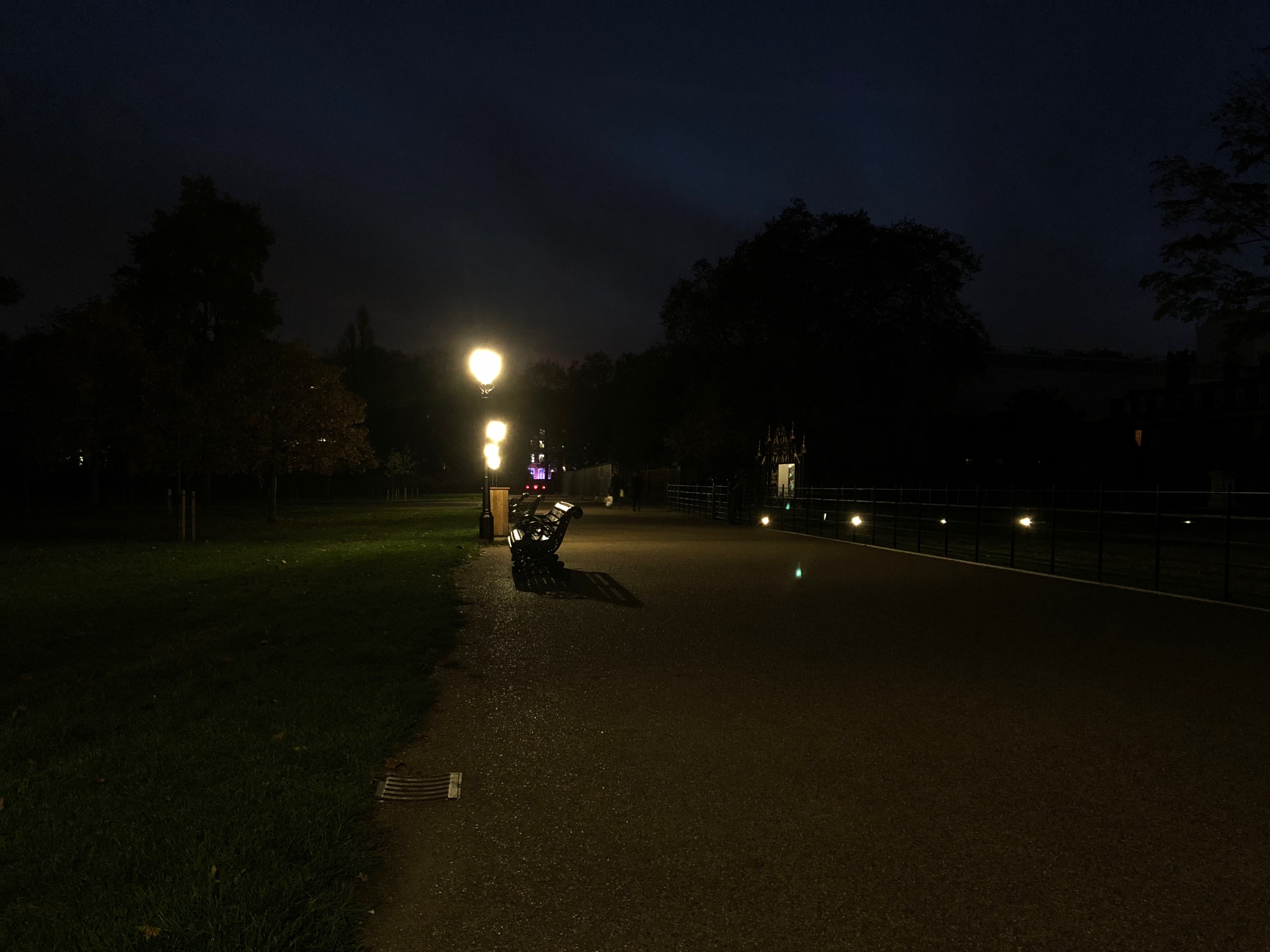
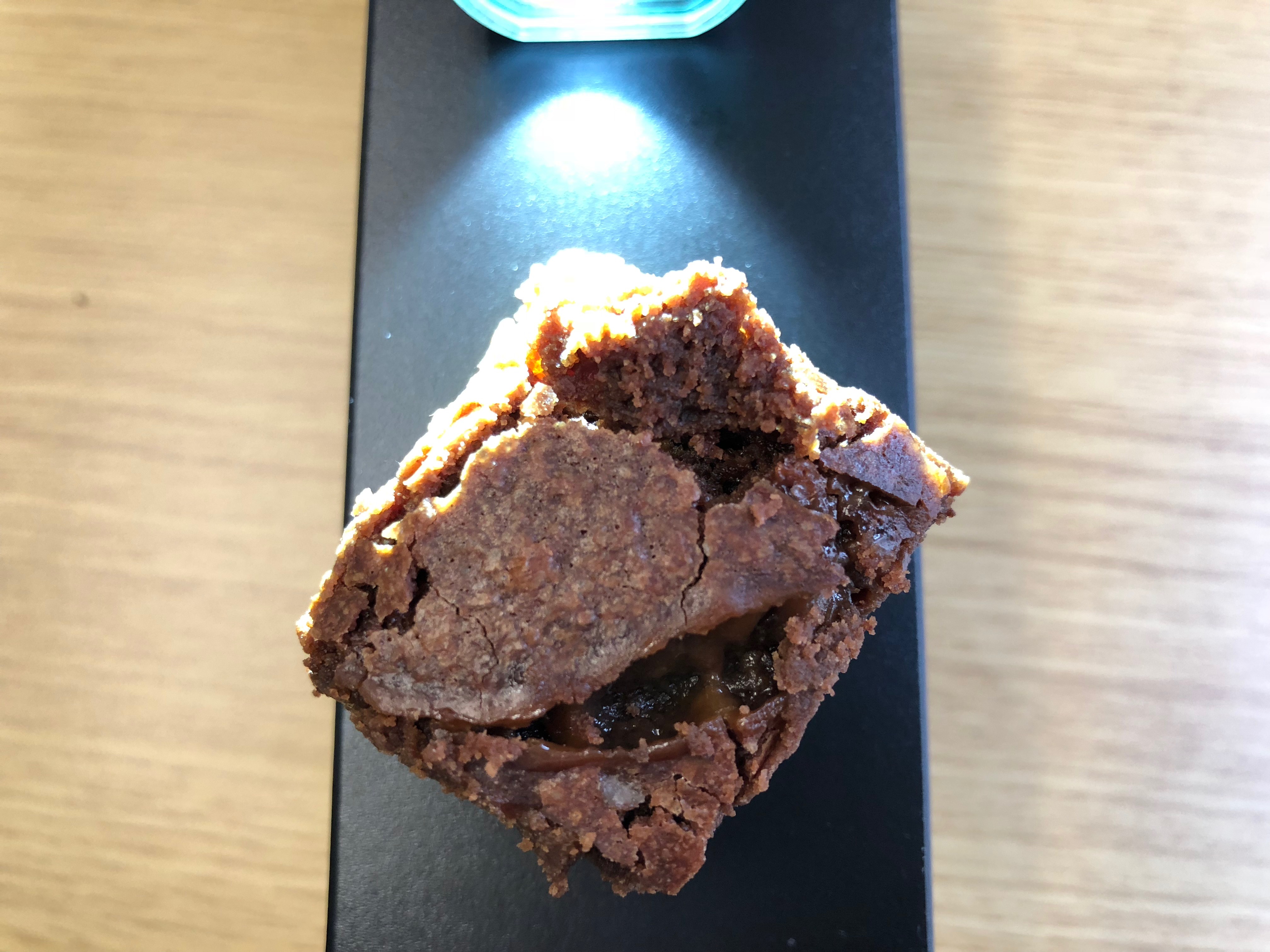




The rear Portrait mode is one of the better options on the market, but sometimes it doesn’t quite find the edge of items it’s trying to depth-sense – the Google Pixel 2 actually does it better with a single lens, although the effect on both is sensational when it works correctly.
It is worth pointing out that ‘standard’ iPhone pictures have a nice level of background blur automatically, with the focal length automatically finding a nice depth of field for whatever you’re trying to snap.






Video capabilities on the iPhone X are also among the best on the market, with the 4K recording at 60 frames per second delivering clear, fluid images, albeit images that will take up a fair bit of space on your device.
If you’re thinking of using the iPhone X as a videographer, you’ll probably want to go for the more expensive 256GB capacity option, as there’s no way to expand the storage here aside from relying on iCloud.
Battery
- Wireless charging is a nice feature
- Another average battery performance from an iPhone
- Charges from dead to 100% in 2hr 15m
The battery on the iPhone X is, according to the same Chinese regulatory filing as we mentioned earlier, is 2,716mAh, which makes it a touch larger than the iPhone 8 Plus.
That's quite a large power cell from Apple, but given the larger screen with more pixels to power, it makes sense.
While the iPhone X battery life isn't mind-blowing, it's certainly better than some iPhones of old - it's more than acceptable.

Some real world use: in heavy testing, we managed to run the iPhone down in just a shade over 12 hours.
But that included 30 minutes of Netflix trying HDR mode, walking to work and listening to Bluetooth music on Spotify, using a portable hotspot on the train, taking sample images with the camera and testing Face ID over and over, and playing some games.
The next day, it got closer to 9PM with a slightly lighter load, but still spending a lot of time testing - both of these were expected. It was also impressive how long the iPhone X held on while watching a movie with only 5% battery left and power-saving mode turned on... we got a good 35 minutes of watching before it finally gave up.
But when put into lighter use - just pulling the iPhone X out once in a while to send a message, take a few pictures at a wedding and navigate on GPS for around 30 minutes, we were at 25% by midnight.
And overnight it only lost 5% battery life before the morning - again, a good result. It's not the absolute best we've seen from a phone, but if you're someone that suffers with an iPhone that drains quickly you'll be pleased with what's on offer here, and most days you'll get home with plenty of power to spare.
Based on the data that we've pulled from using the iPhone X in a variety of scenarios, we've found that it'll last a good 18 hours per day with some heavier usage - that includes a tonne of Bluetooth streaming, WhatsApp, Facebook and browsing the internet, all things that are pretty tough on the battery.
The reason it seems to do better than some might expect is the screen - the OLED technology has proven to be very effective at sucking less battery.
That's shown in our testing: we ran the same 90 minute, Full HD video at full brightness from 100% charge - and the iPhone X set a record-breaking score for an Apple handset.
Where most (including the iPhone 8 Plus) lost around 25% battery, the iPhone X managed an incredible 10% drop - that's unheard of in our tests, and given the X has more pixels to drive from the same A11 Bionic chipset on the 8 Plus, it's only the OLED technology that's the differentiator.
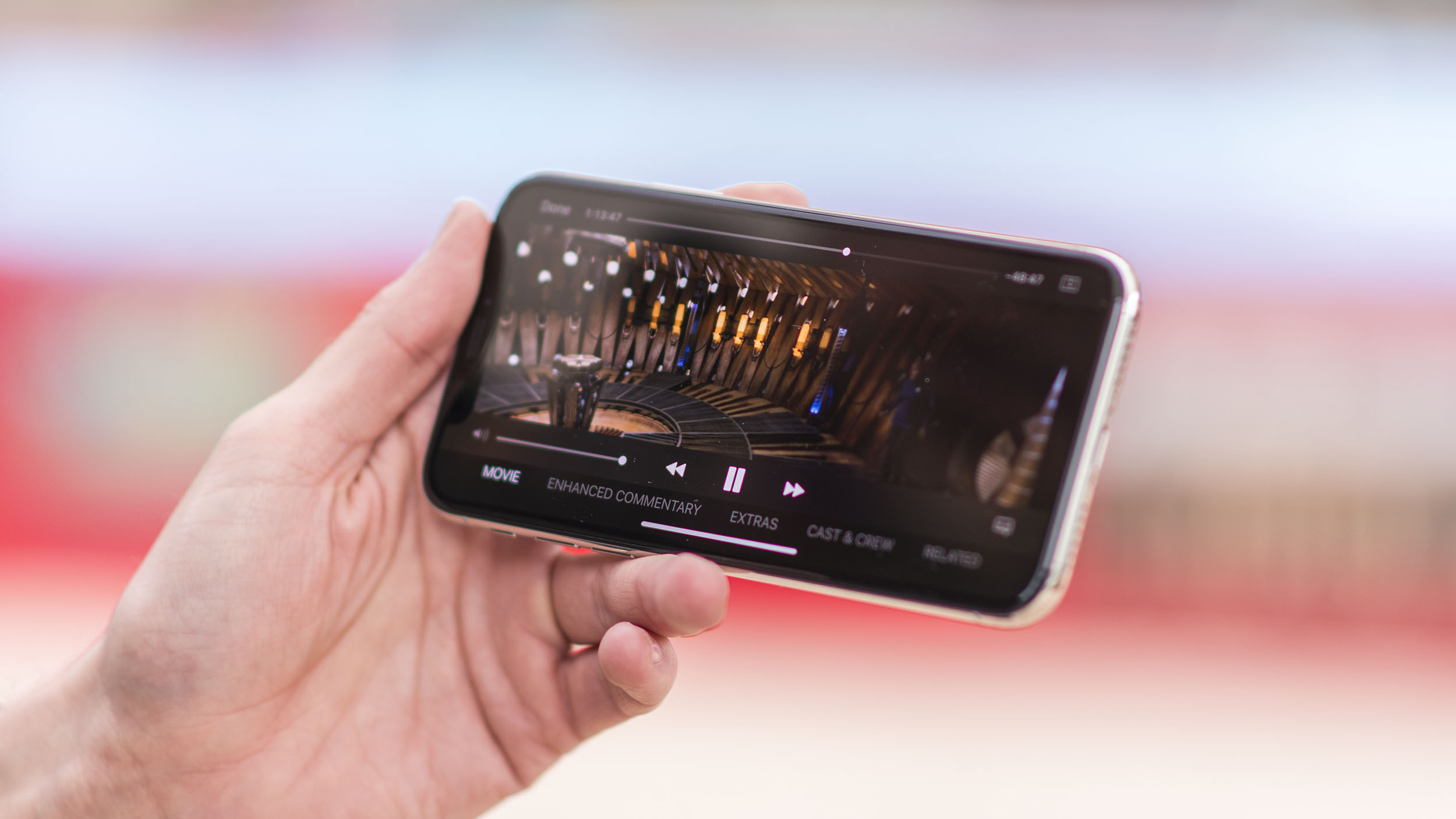
This isn't the first iPhone that can support wireless charging - that title goes to the iPhone 8 - but it's a really convenient feature and we'd suggest investing in a decent pad for home and work, so you'll never have to worry about running low on juice while being able to easily pick it up and put it down.
The good news is that Apple has since enabled even faster charging through the wireless pads - nothing major, but should mean you get more boost from a few minutes of being plopped down on the charger.
In terms of time to charge, the iPhone X took 2 hours and 15 minutes to charge fully from dead (with Airplane mode turned on), which is about average, although we used a larger iPad charging block for faster juicing.
You'll get 20% battery life with 15 minutes of charge, and that should get you home in a pinch.
You can also buy a USB-C Lightning cable and block to get fast charging capabilities - reported to be 50% battery from 30 minutes of power - but that costs $75 / £75 / AU$100 to buy the cable and block... which is pretty pricey for the privilege of faster powering up.

The A11 Fusion chip inside this phone is one of the probably reasons for the improvement in battery life - with more efficient cores and a 10nm manufacturing process (which means things are closer together, and more efficient) Apple has worked hard on bringing both power and efficiency to the iPhone X.
This phone is more of a phablet than a standard phone in terms of screen and battery size, and that shows in the fact it's similar to the iPhone 8 Plus in terms of time between charges.
Does the iPhone X have good battery life? It's pretty good - nothing to write home about but if you've had another Apple handset for a few years you'll be very pleased with how well it lasts during the day.
Verdict
Let’s get one thing out of the way first: the iPhone X is not a phone for the Android fan. This is a phone for someone who’s entrenched in the iPhone ecosystem and doesn’t want to leave, but has become bored to tears by the same old design from Apple for the previous four years.
The iPhone X is the phone we’ve been willing Apple to make, partly so that we’ve got something new to write about, but also so those who look forward to the arrival of a new iPhone actually have something to get excited about.
‘New Phone Day’ is one of the highlights in many people’s years, and the iPhone X is worthy of the excitement.
Apple has got things almost entirely right with the iPhone X, taking all it’s learned from its past handsets and fusing them together to make a device that’s like nothing else the brand has ever produced.
See our overview video of the iPhone X below.
In our opinion, the greatest iPhone before the X was the iPhone 4, which elevated Apple from ‘poor specs but great user experience’ to a real smartphone contender, fusing strong design with decent performance.
But the iPhone X takes things in a whole new direction, offering users something they’ve never had before in the iOS world. We're annoyed it's taken this long to get an OLED screen on an Apple phone, but now that we've got one there's not a lot to fault on the iPhone X.
The selfie camera, the raw power, the all-new screen shape and the well-implemented Face ID combine impressively to create a new direction for the iPhone.
It’s interesting that Apple says the iPhone X is the future of smartphones, however, because many of its new features are already present on other handsets on the market. The X is not going to make waves in the same way the original iPhone did.
But in terms of the future of iPhones… well, this is it. Anything that’s not the iPhone X now just looks dated and slathered in bezel, and Apple clearly agrees, as all of its 2018 handsets sport this design. The iPhone X is indeed the Apple handset of the future, and everything else it’s made is history.
Should I buy it?
Just think about handing this phone to someone who’s got the first iPhone in 2007 – that 3.5-inch-screened metal-and-plastic fusion, with a terrible camera, grainy screen, no apps and a swipe to unlock.
The iPhone X is a smooth, machined, waterproof phone with a superb high-res screen, 256GB of storage, millions of apps, lightning download speeds, AR effects, instant facial recognition, amazing speakers, sublime photos from the front and back cameras, console-level gaming… the iPhone X serves as powerful reminder to sometimes step back and see how far we’ve come.
Is it perfect? Of course not – it's so, so expensive. No matter how good the phone is, the extreme cost puts it out of reach of so many smartphone fans.
The notch on the iPhone X irks, the bezels are a little too heavy to call it bezel-less, the camera isn’t market-leading (although it’s very, very good), and despite all the technical innovation it’s impossible to look past the dizzying cost.
That said, aside from the newer iPhone XS, the iPhone X is the closest to perfection Apple has ever got with an iPhone – and if you’re okay with the sky-high price, you’re going to love it.
First reviewed October 2017
Not sold on the iPhone X? Then check out these options below...
iPhone XS and iPhone XS Max
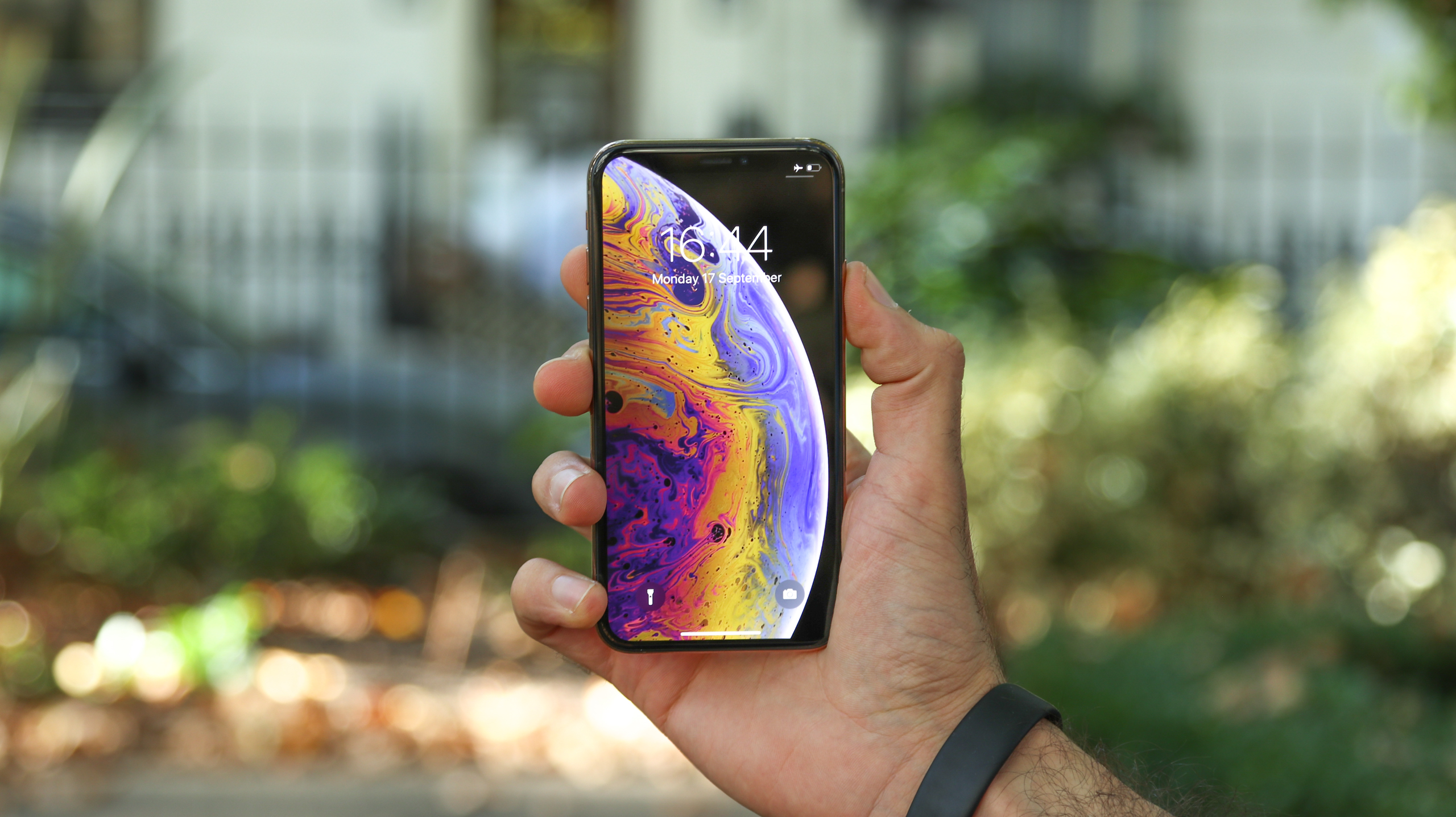
The obvious alternative to the iPhone X is the newer iPhone XS. It's similar in a lot of ways, with much the same design and screen, but it has more power, better speakers, slightly improved battery life and some camera improvements.
So it's a refinement of what the iPhone X offers rather than anything particularly new. Is that worth the outlay? Only you can decide, but these are both top phones.
If you want to see bigger changes though then you might want to consider the iPhone XS Max, which is similar to the iPhone XS in most ways but has a much bigger 6.5-inch screen. Though that will cost you even more.
- Read our iPhone XS and iPhone XS Max reviews
iPhone XR

The iPhone XR is an interesting option as it's newer than the iPhone X and has a faster chipset and a larger 6.1-inch screen, yet it's marginally cheaper.
There are some sacrifices though, the main ones being that the design while similar isn't quite as nice, the screen is LCD rather than OLED, and it only has one rear camera.
Ultimately the iPhone XR is probably the worse phone, but if the screen size or extra power appeal you wouldn't be making a mistake in buying it.
- Read our iPhone XR review
iPhone 8 and iPhone 8 Plus
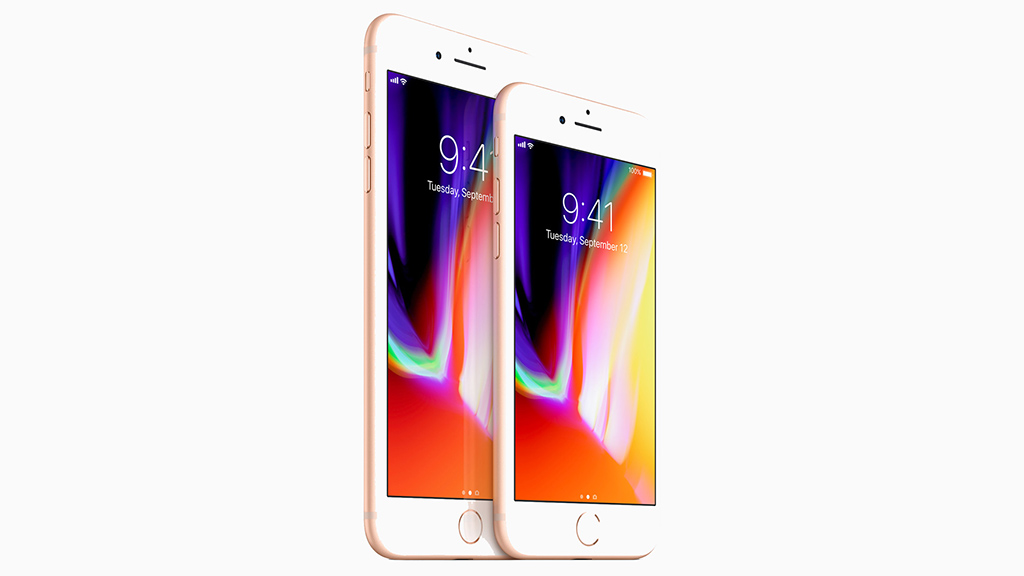
If you’re looking to get a new iPhone, and want to spend a lot but not quite as much as on the iPhone X, then the iPhone 8 Plus is the one to go for.
It’s got a large screen (although not as high-res, nor as premium tech), and virtually the same dual-camera setup. It’s not quite as powerful in low light as the iPhone X, but it’s certainly capable, and it’s the ‘next phone down’ on the Apple phone ladder.
If the iPhone 8 Plus size turns you off, then the iPhone 8 is the one to choose if you want something more manageable in the palm. Both phones have the old-fashioned home button you're used to.
It’s got all the incredible power of both the iPhone X and the 8 Plus, and while it scrimps on the pixel density of the screen it still has True Tone technology, and the same fast and wireless charging capabilities.
- Read our iPhone 8 Plus review
Samsung Galaxy S9 and S9 Plus
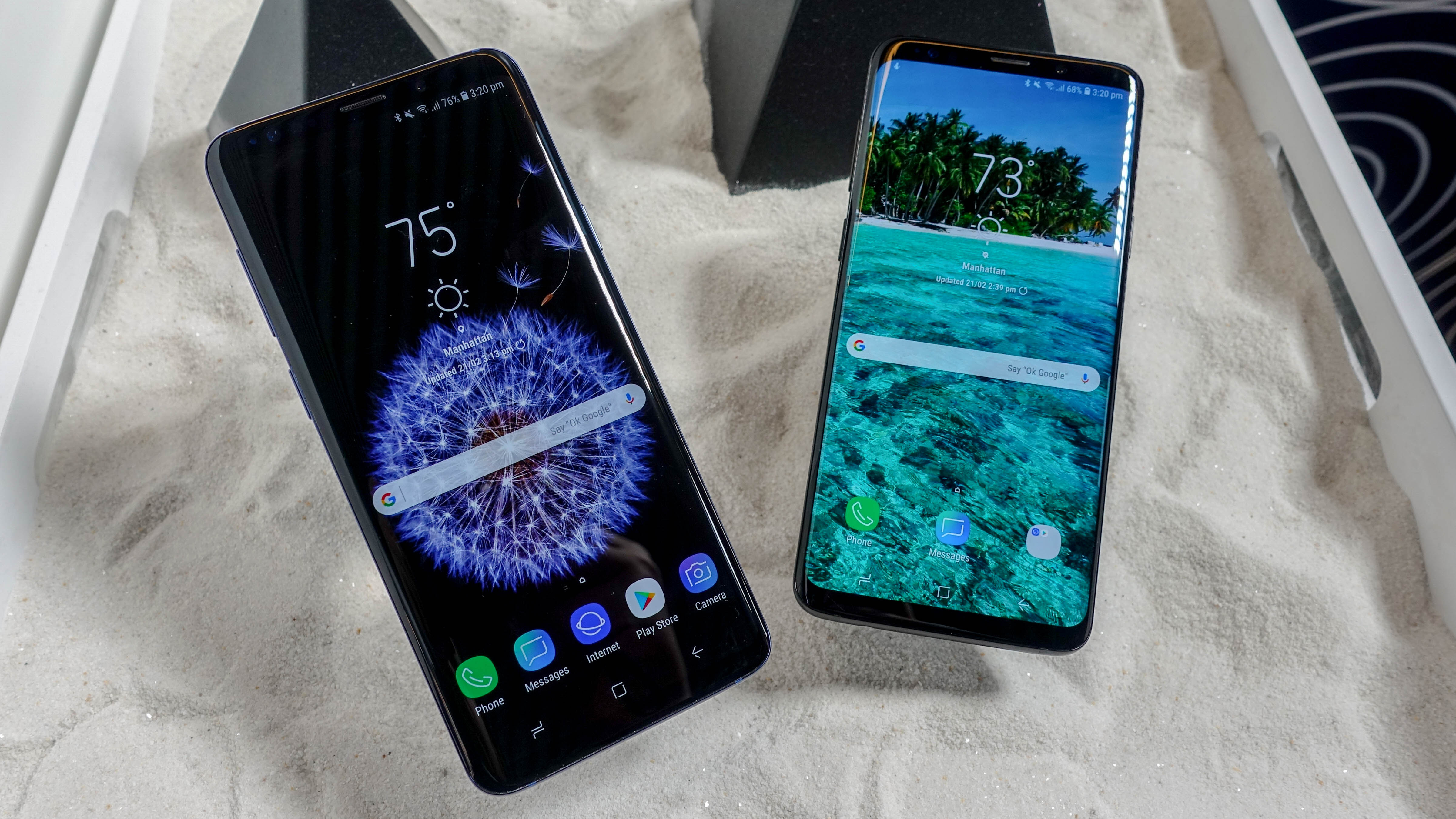
Samsung and Apple are taking cues from each other every new phone cycle, so to be tempted by the Galaxy S9 and S9 Plus isn't too surprising. It's a nice phone too.
If you can get past the switch to Android and handle a phone with a 6.2-inch display, the S9 Plus is a top phone. Its curved Super AMOLED display and rear-mounted fingerprint sensor make it pleasing in both form and functionality. You're also going to love the photos, and the fact that it's slightly cheaper than Apple's launch price.
- Read our Samsung Galaxy S9 review
- Read our Samsung Galaxy S9 Plus review
Samsung Galaxy S10 and S10 Plus
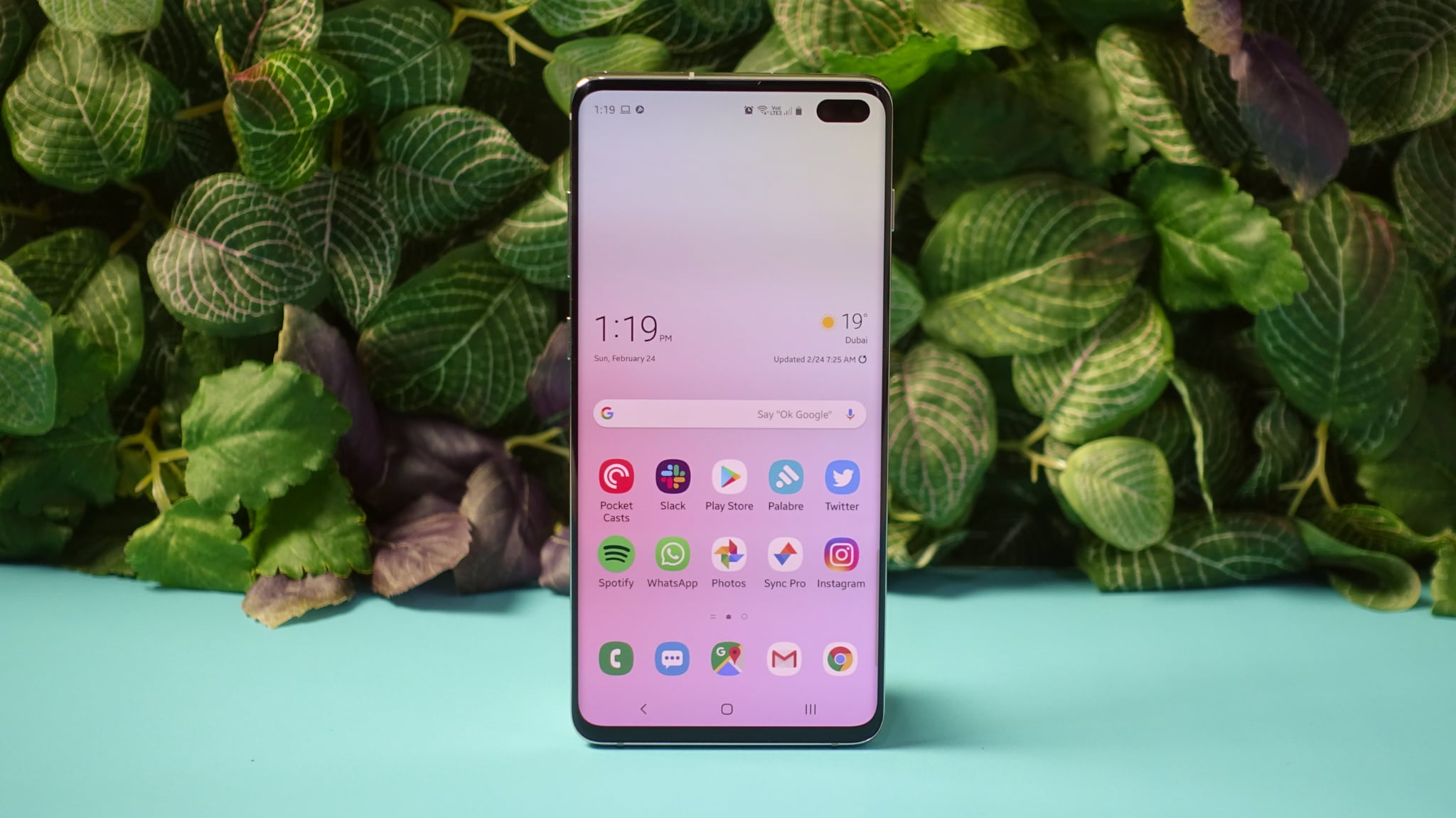
You're probably not considering the Samsung Galaxy S10 or S10 Plus, since they're more competitors for the newer iPhone XS.
But if you want one of the best Android handsets available and are prepared to pay for it then one of these could be a good choice.
They do away with the notch in favor of a camera cut-out in the screen, for an all-screen design. They also have a curved display, an in-screen fingerprint scanner, loads of power, and in the case of the S10 Plus five cameras, with three on the back and two on the front.
- Read our Samsung Galaxy S10 Plus review and hands on Galaxy S10 review
Samsung Galaxy S8
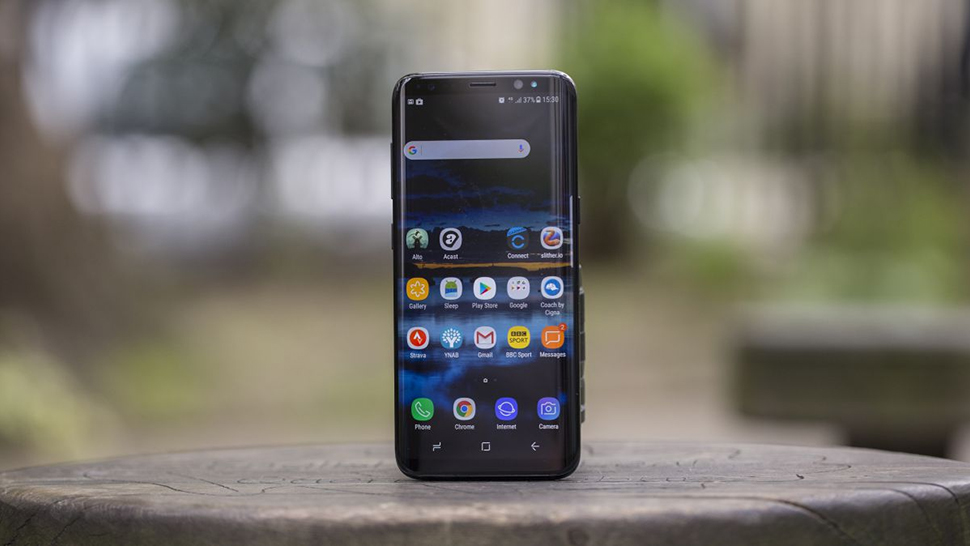
Okay, the chances are you’re not going to pick up an older Samsung phone either if you’re looking at buying the iPhone X, but it’s definitely worth considering. It also uses OLED technology – and is pretty nifty – at it, in our opinion, and it packs an industry-leading camera.
It’s a cheaper phone too – partly due to the original price, and also from being on the market a few months and the cost declining. But few people are likely to make the switch from Apple’s ecosystem to Android’s.
- Read our Samsung Galaxy S8 review
0 comments:
Post a Comment